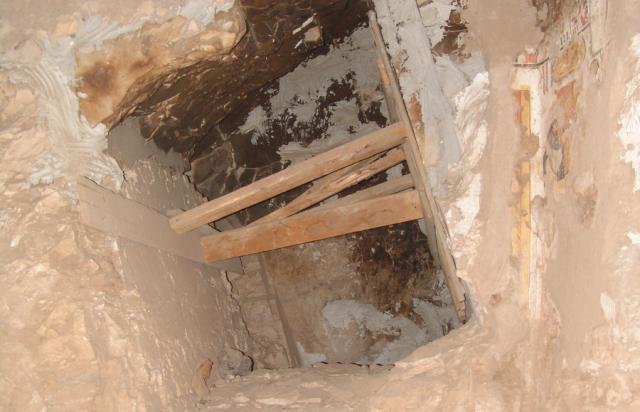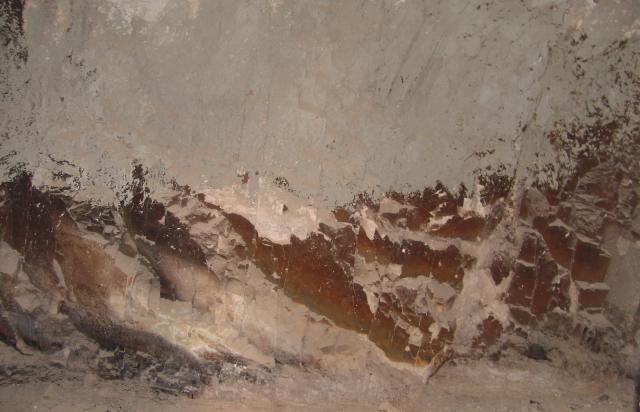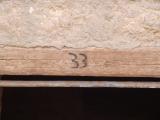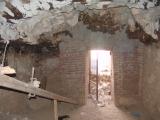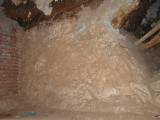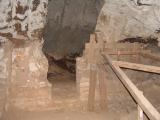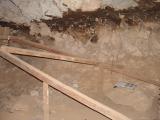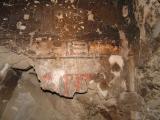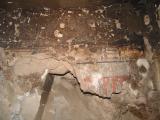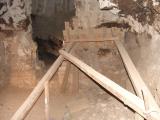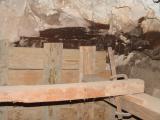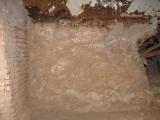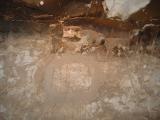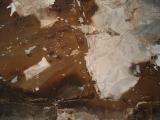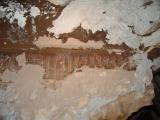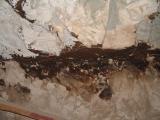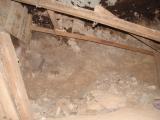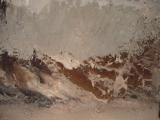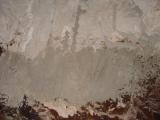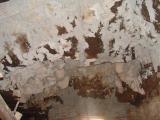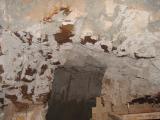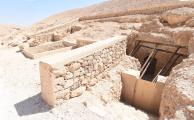QV 33
Queen Tanedjemy
Entryway A
See entire tomb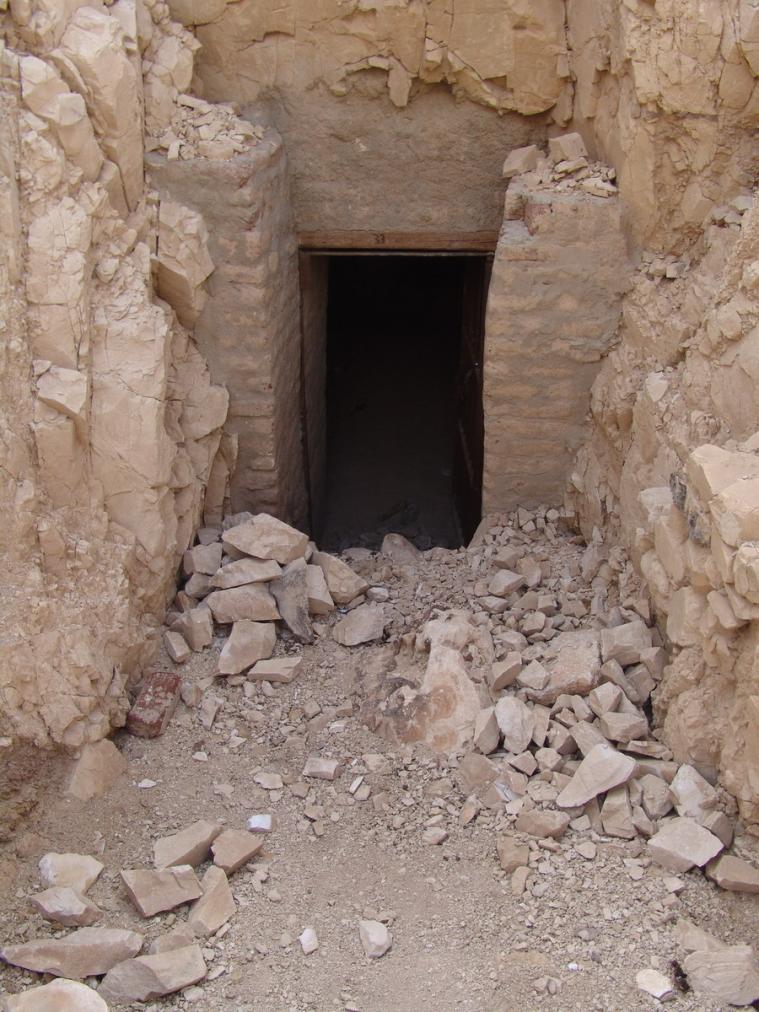
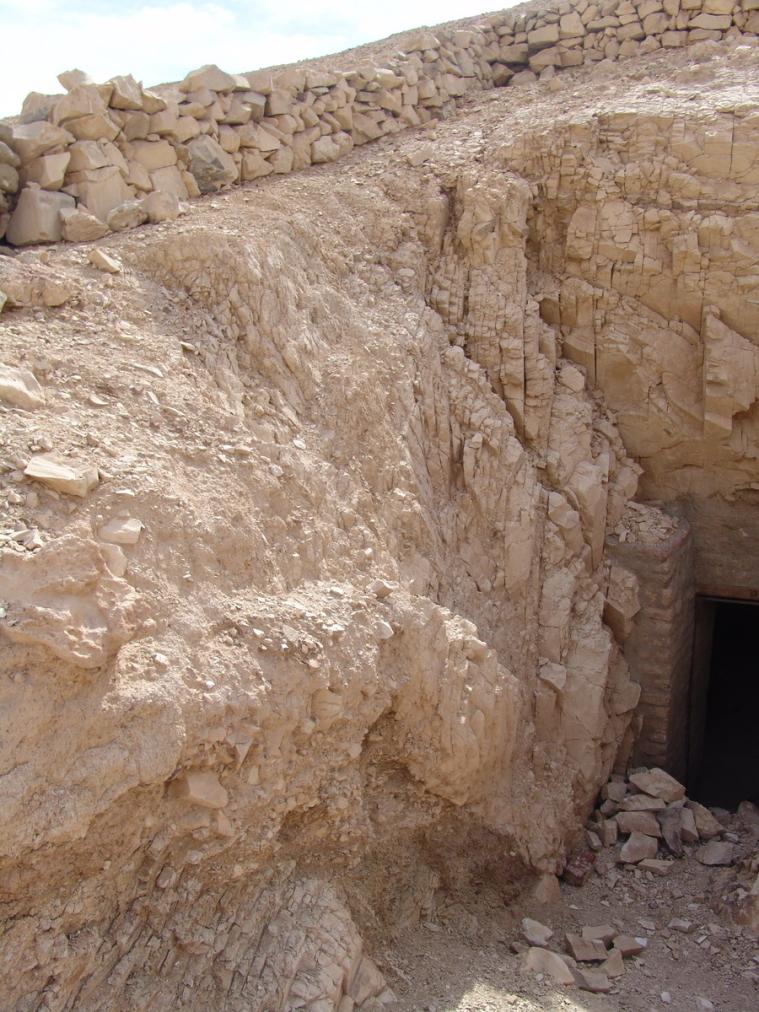
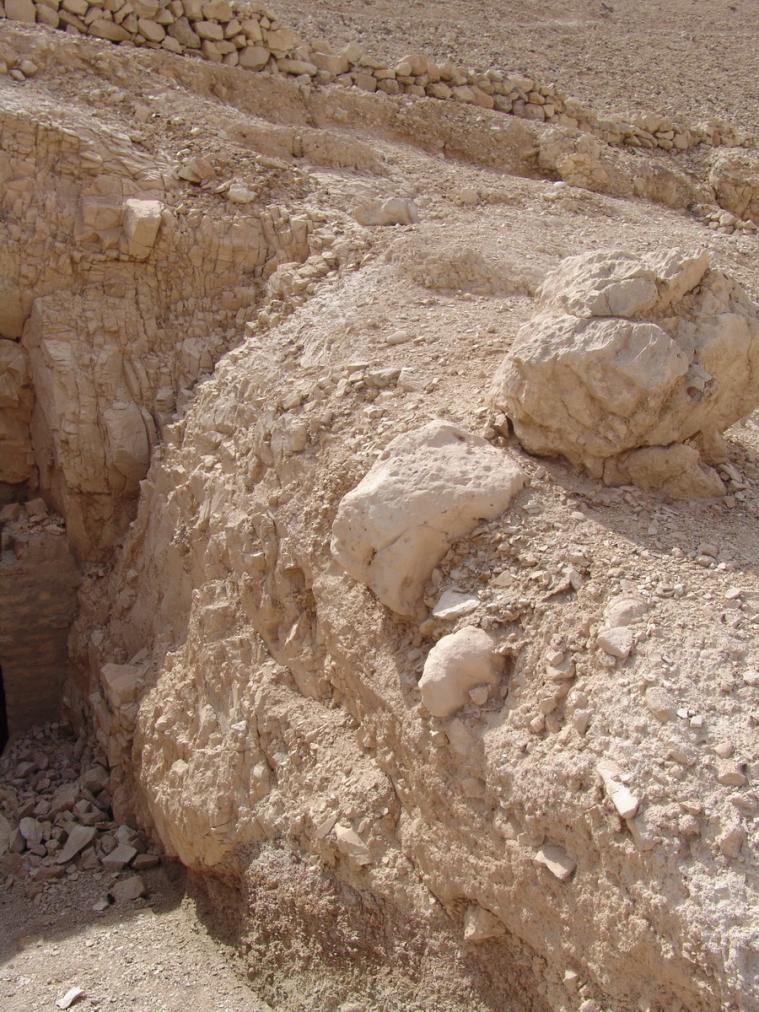
Gate B
See entire tombThis gate had collapsed and has been rebuilt. The lintel and jambs are now modern fired brick with cement and a metal door with grid and mesh prevents access.
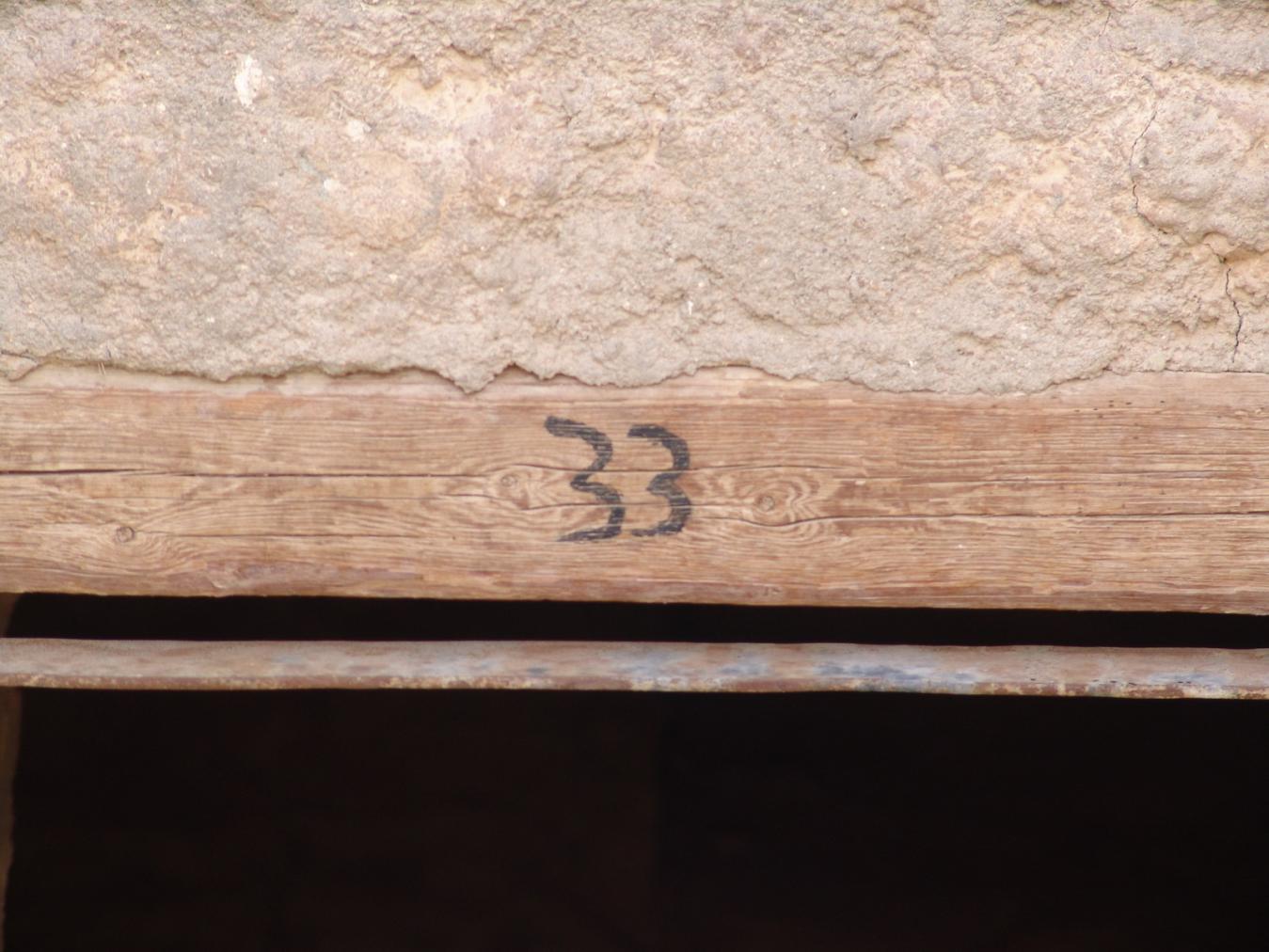
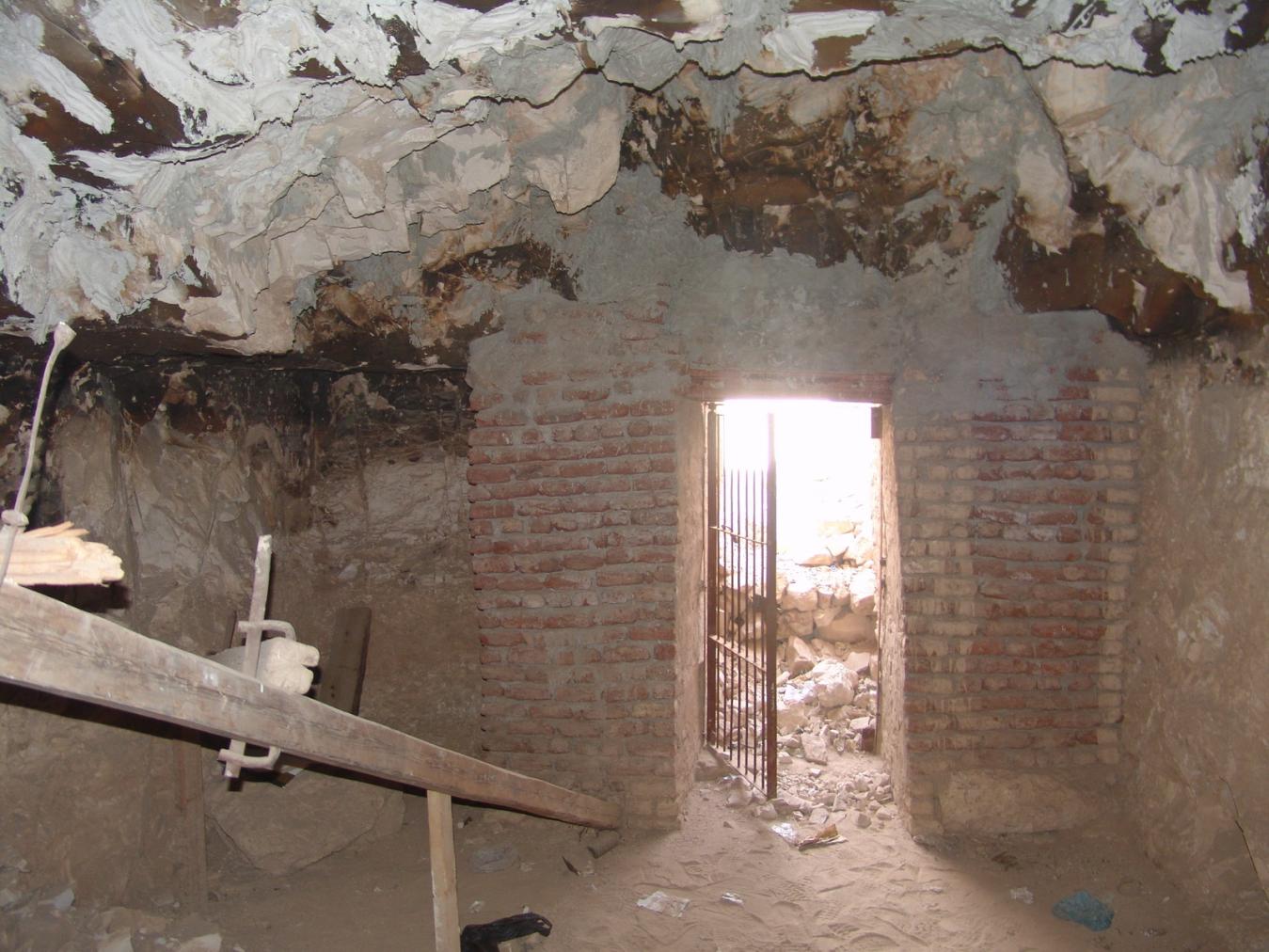
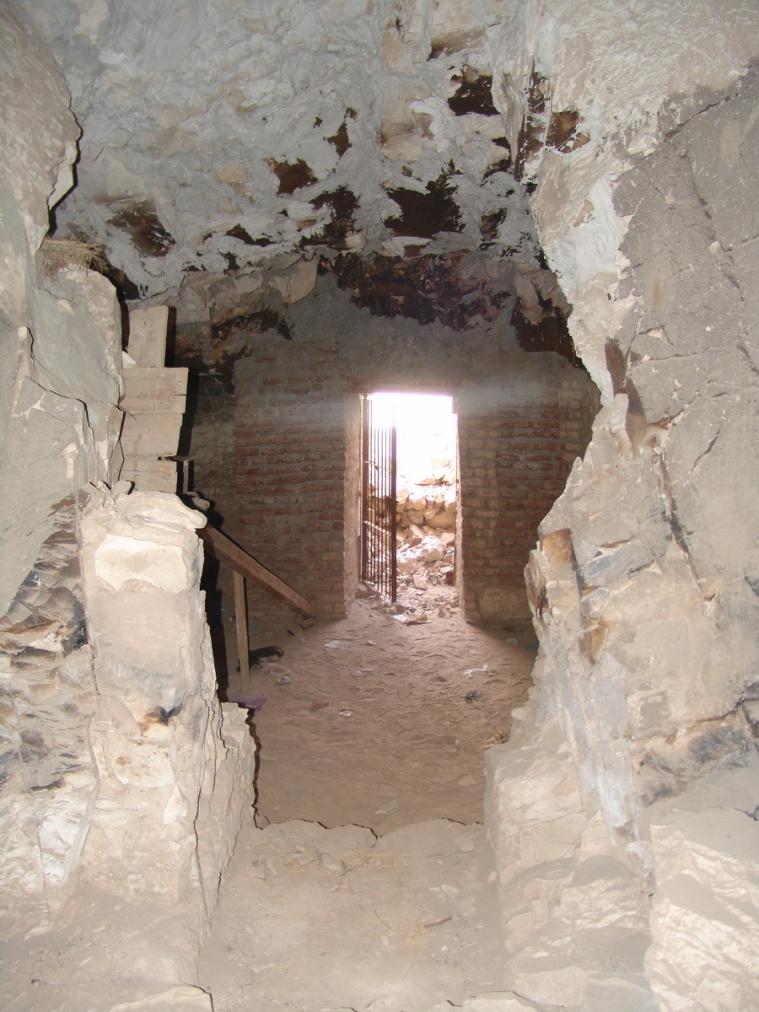
Chamber B
See entire tombThis chamber lies on axis with the entryway. It has been severely damaged and blacked by fire and presents faulting and loss of the ceiling and walls. There are localized areas of recent loss along the west wall, and especially in the center of the ceiling where post-fire loss is apparent. A pit was cut into the floor of the southwestern corner.
The only extant decoration in this tomb is located in this chamber. It survives along the upper parts of the walls. The west and south walls include part of the Khekher frieze, Queen's Cartouche, and the roof of a shrine (west), and an image of the Queen seated before an offering table (south).


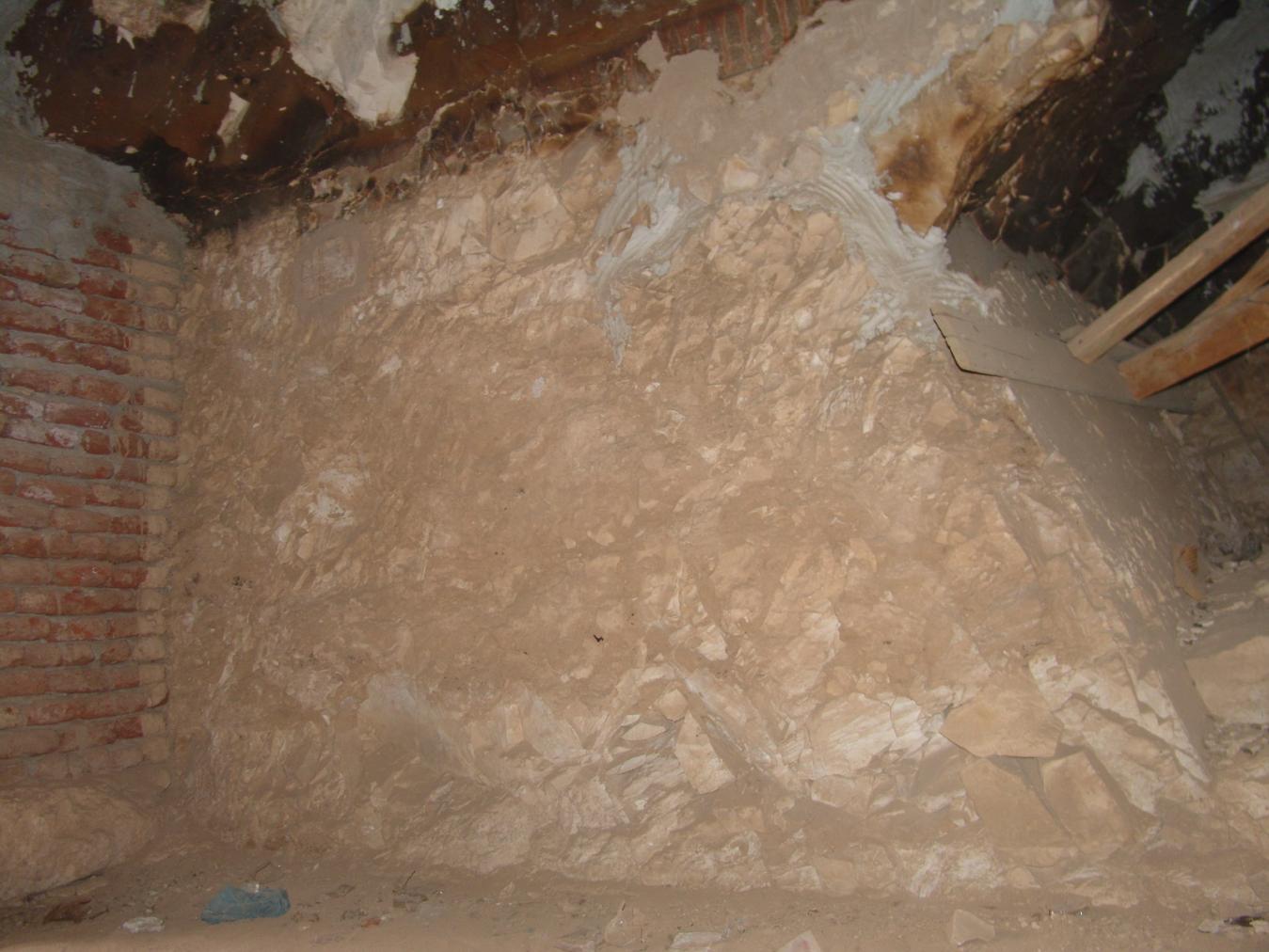
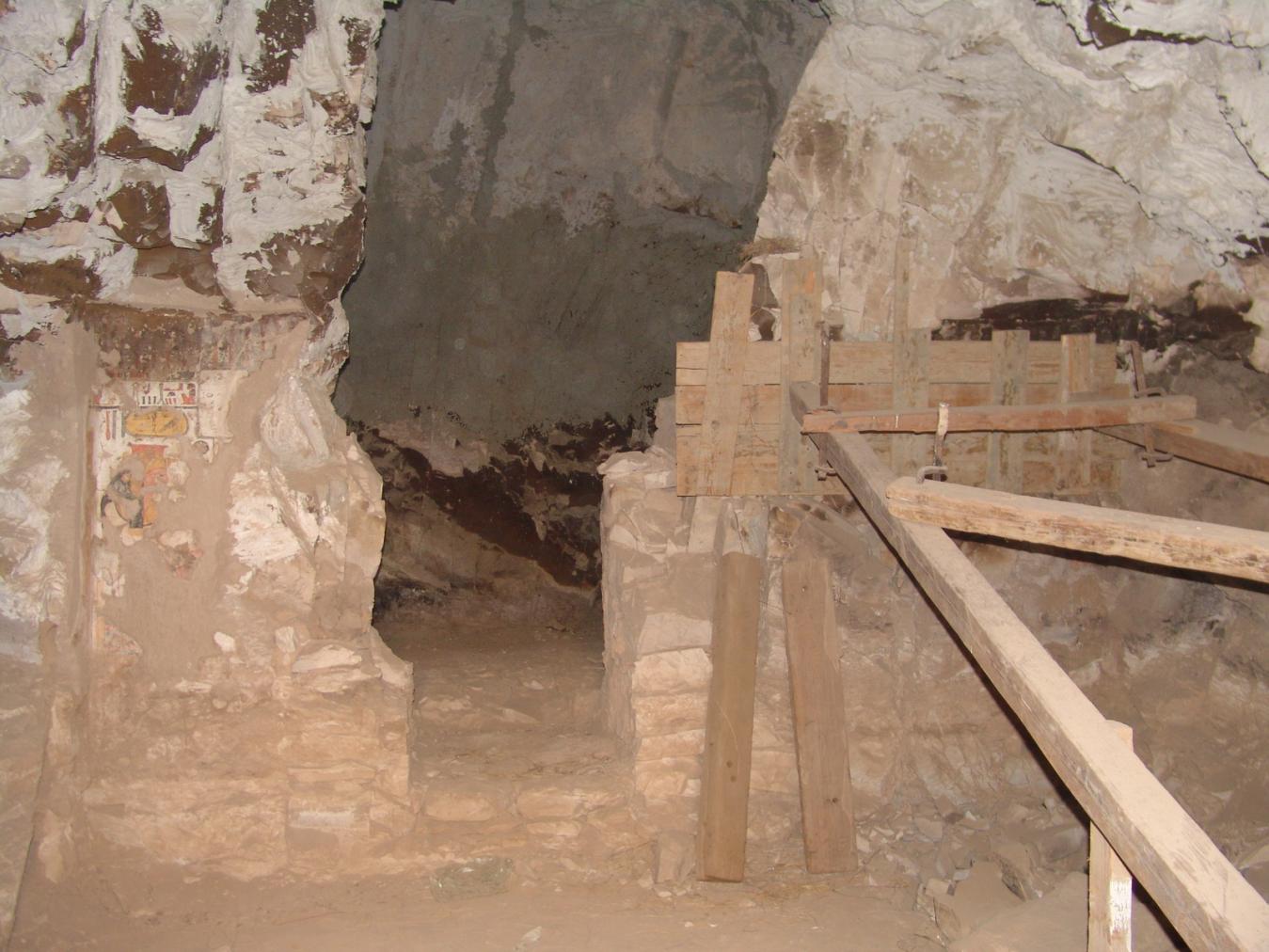
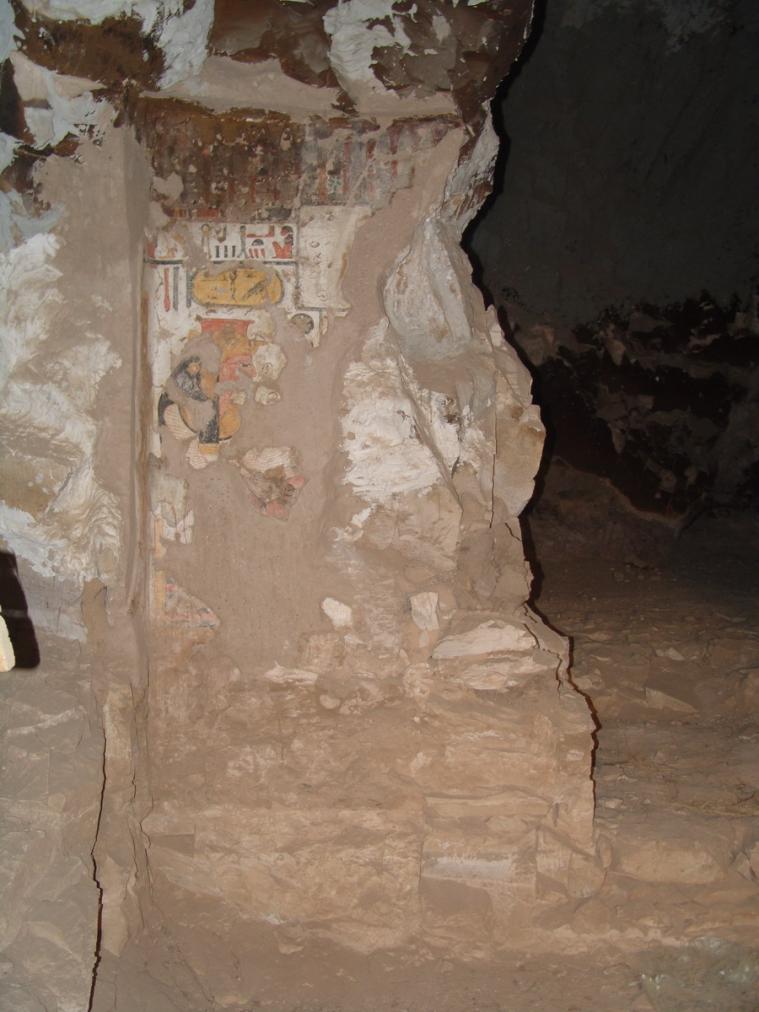
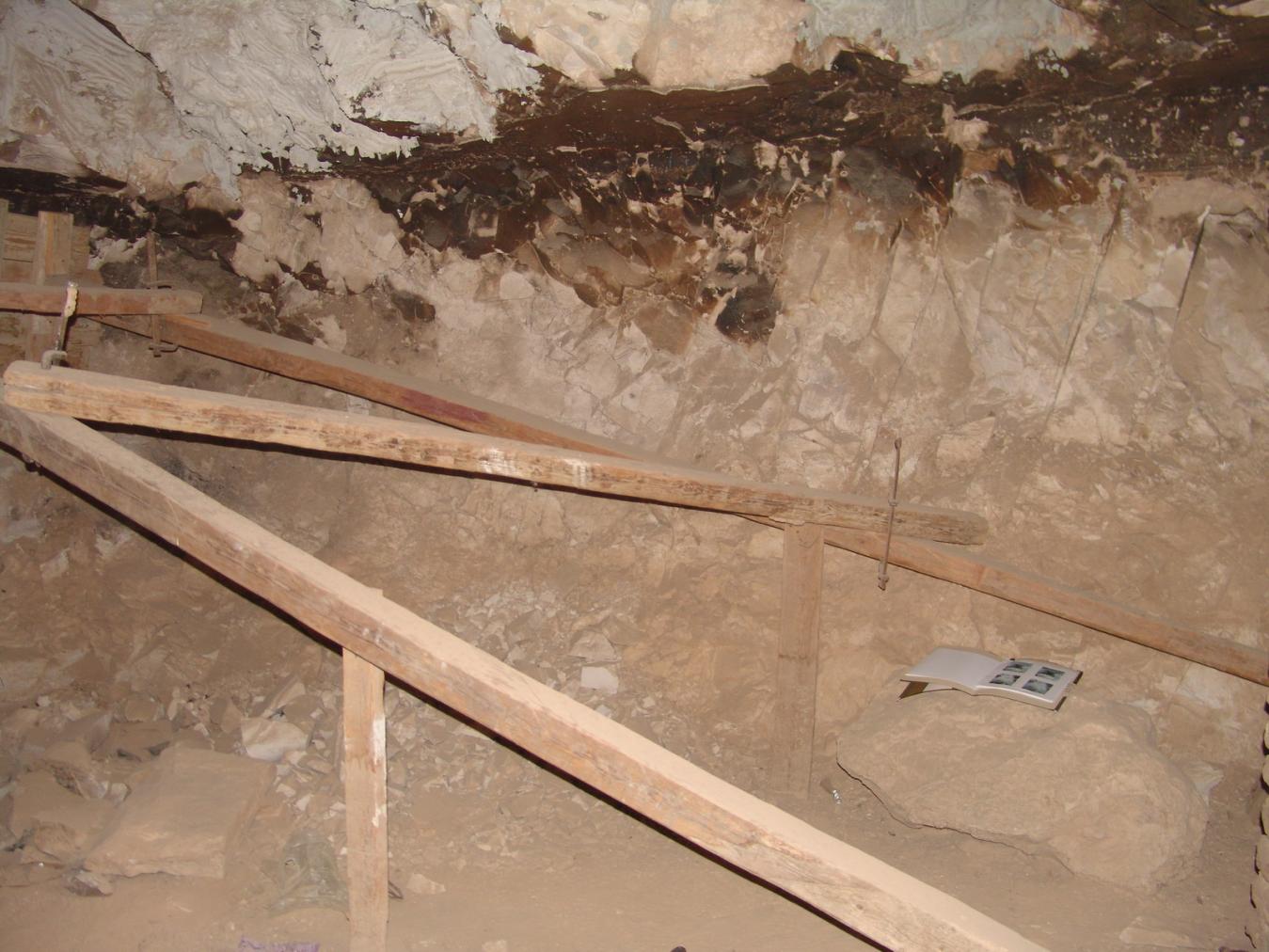
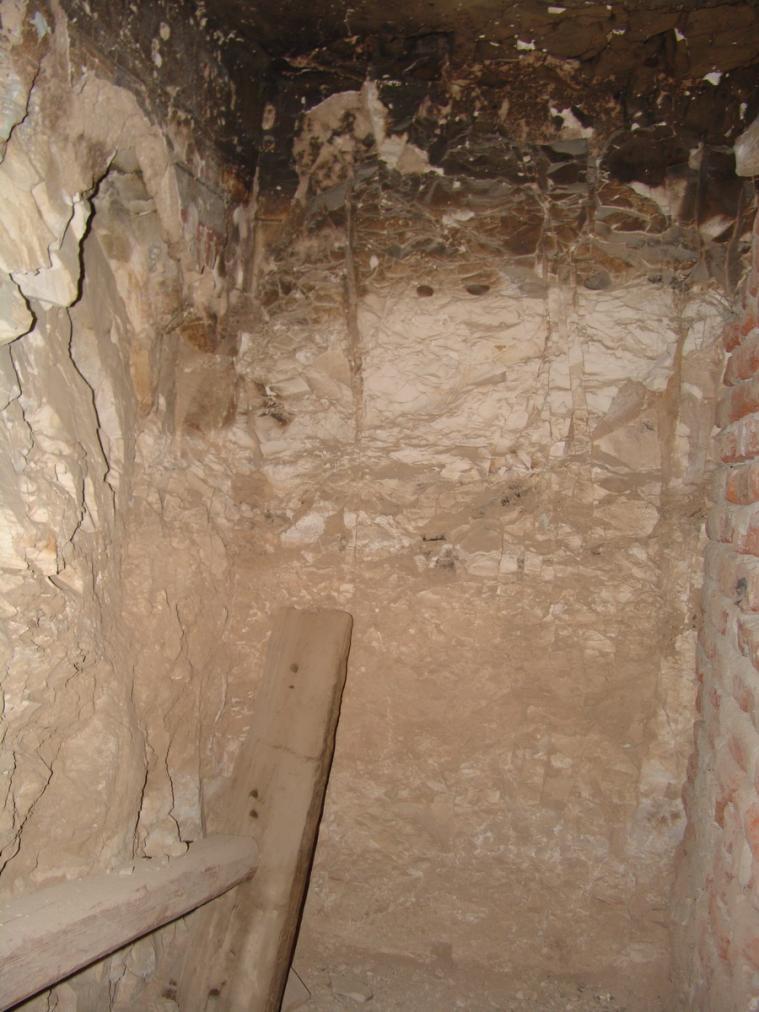
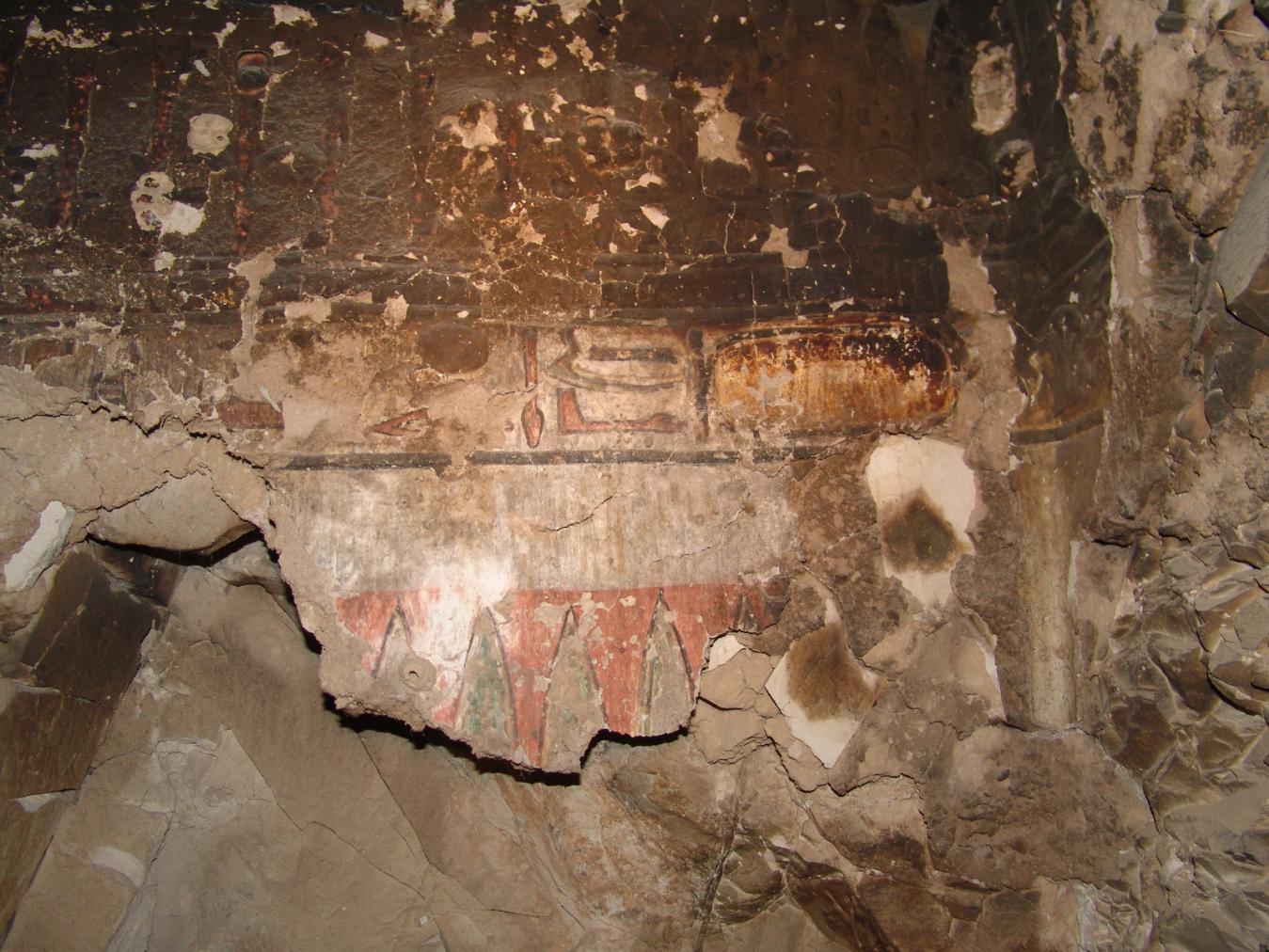
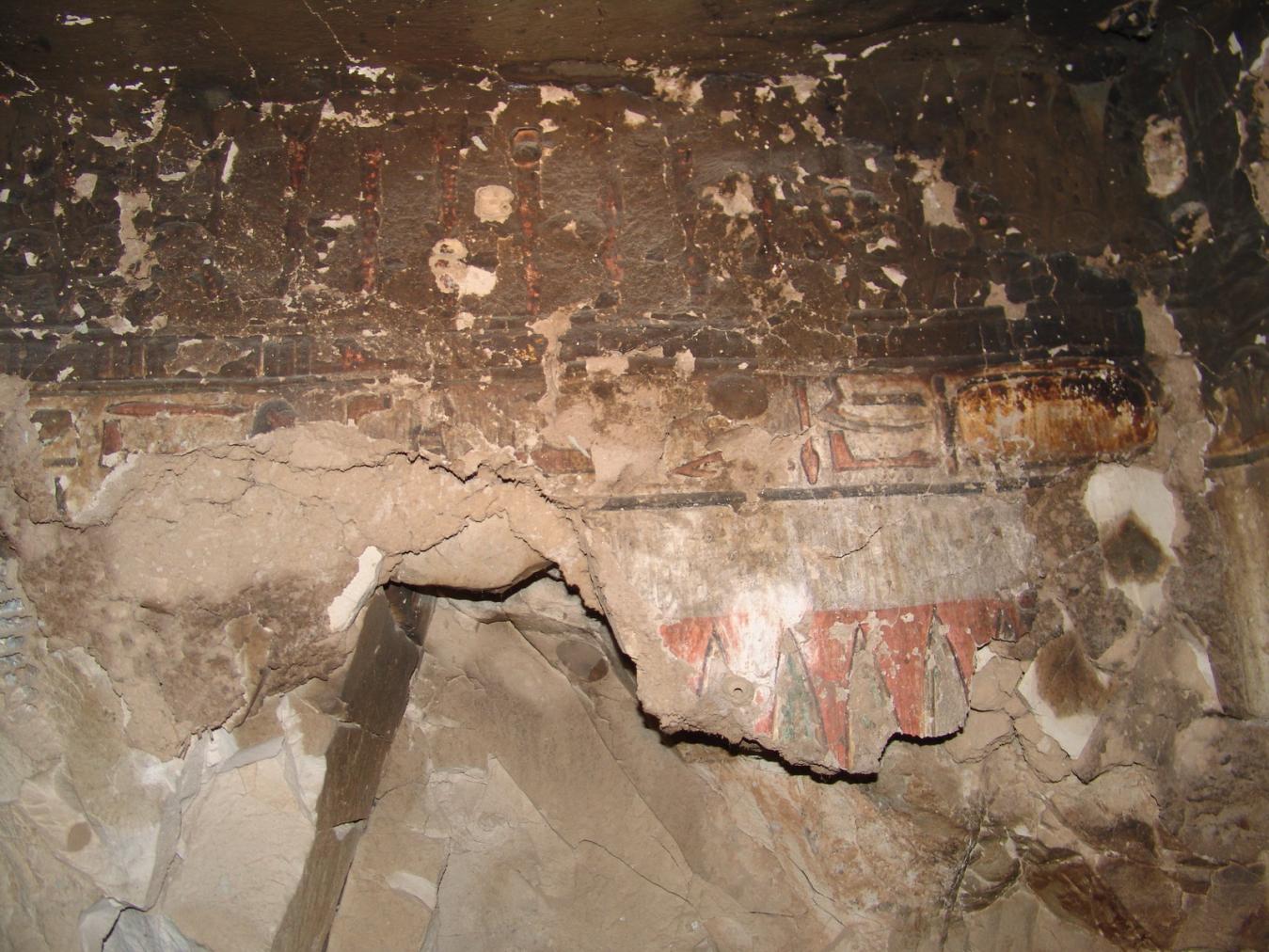
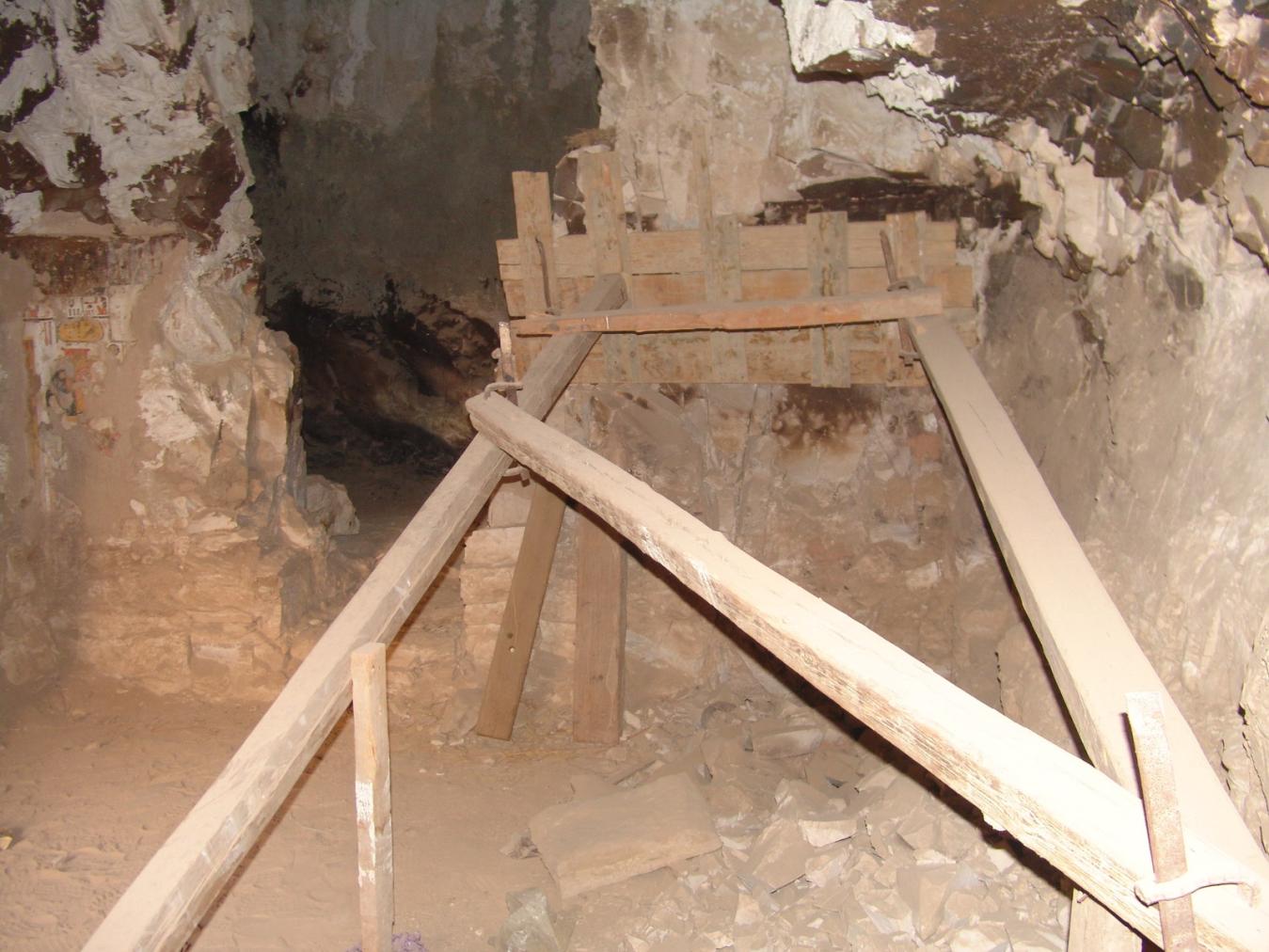
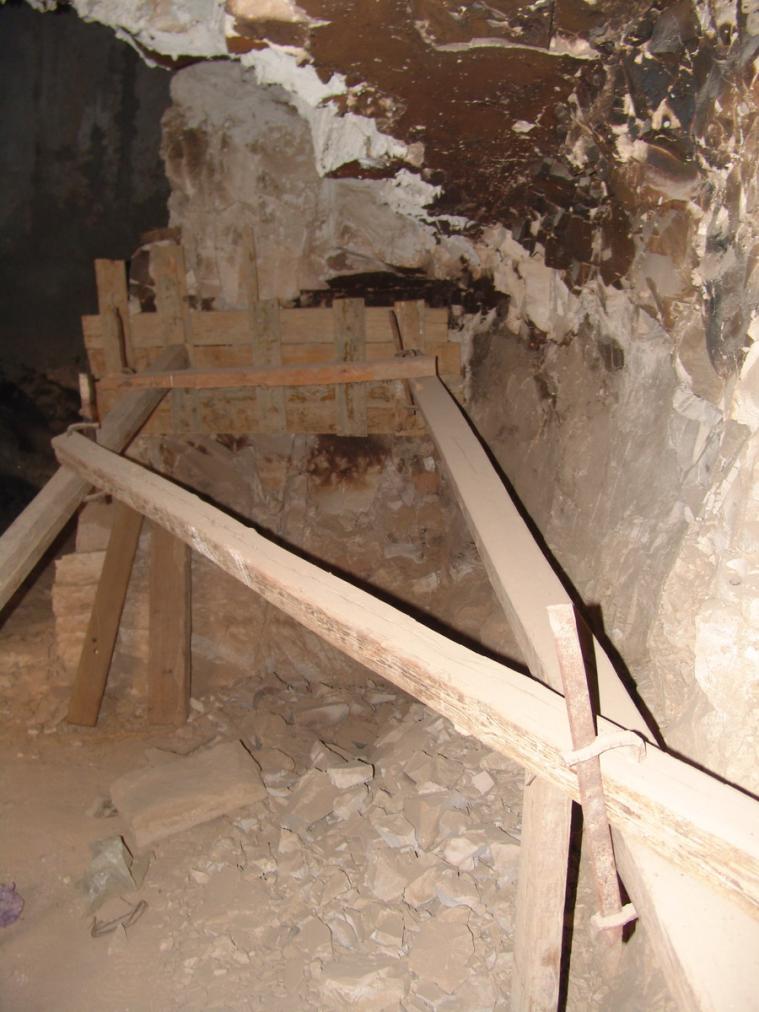
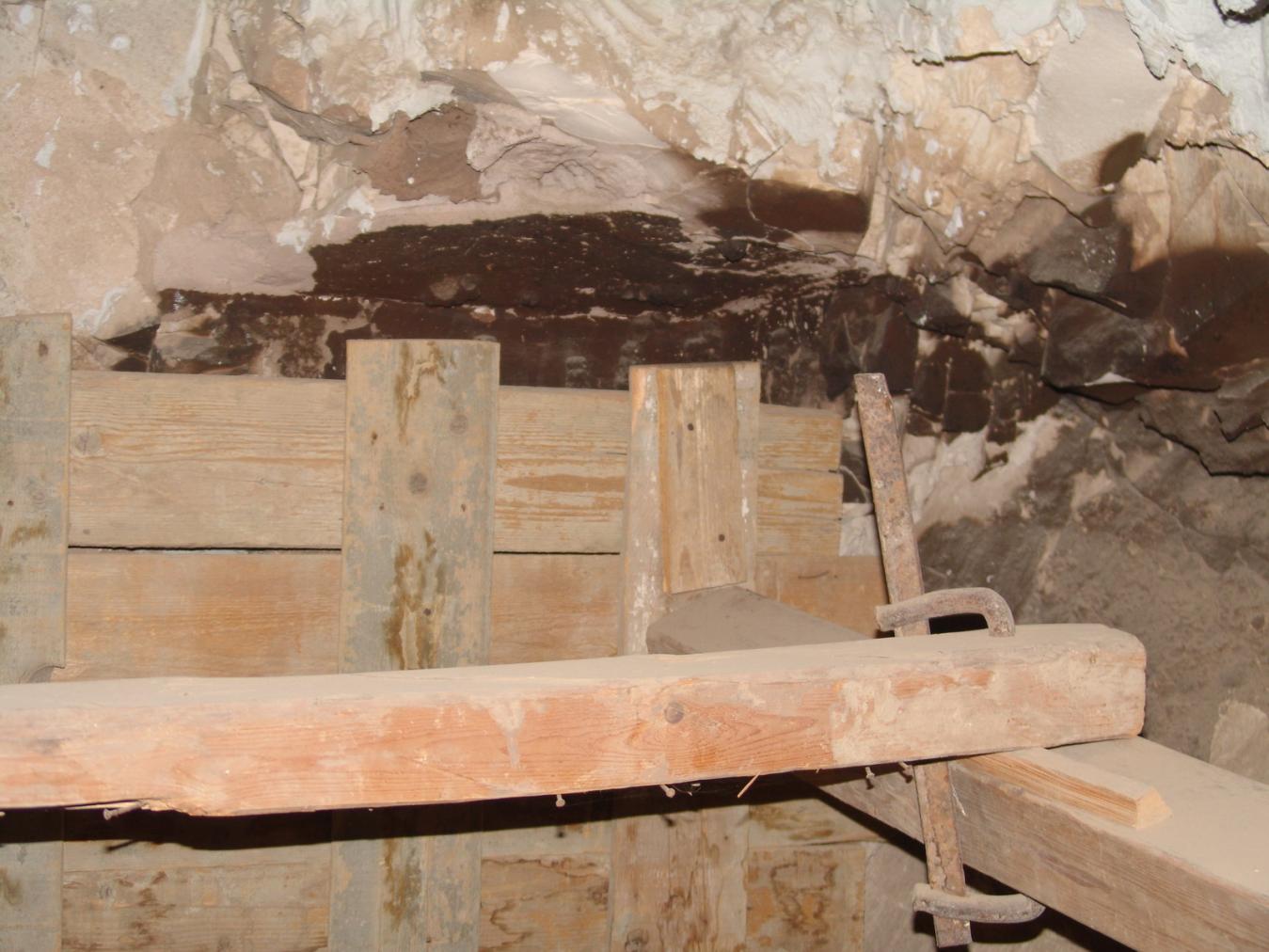
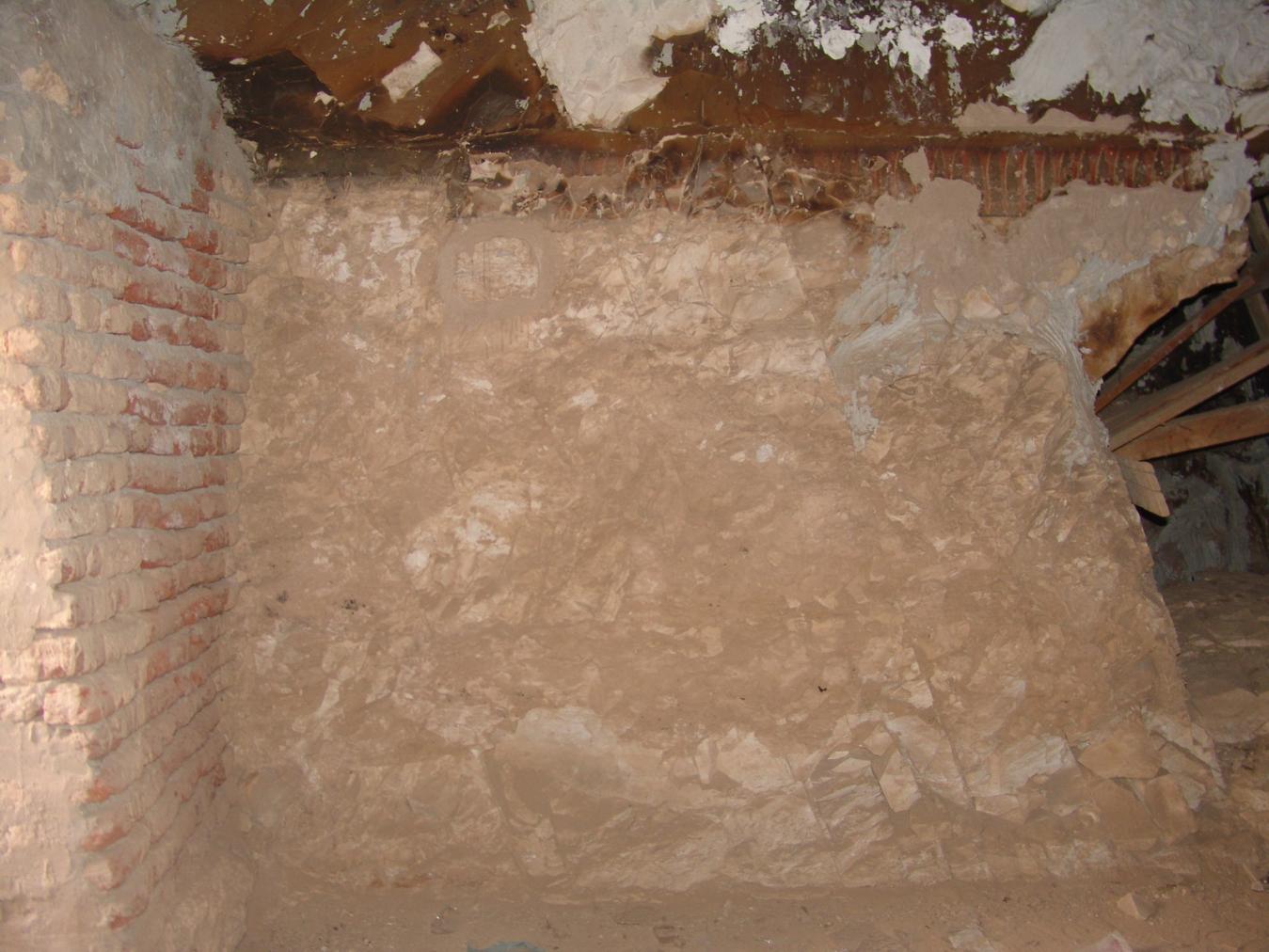
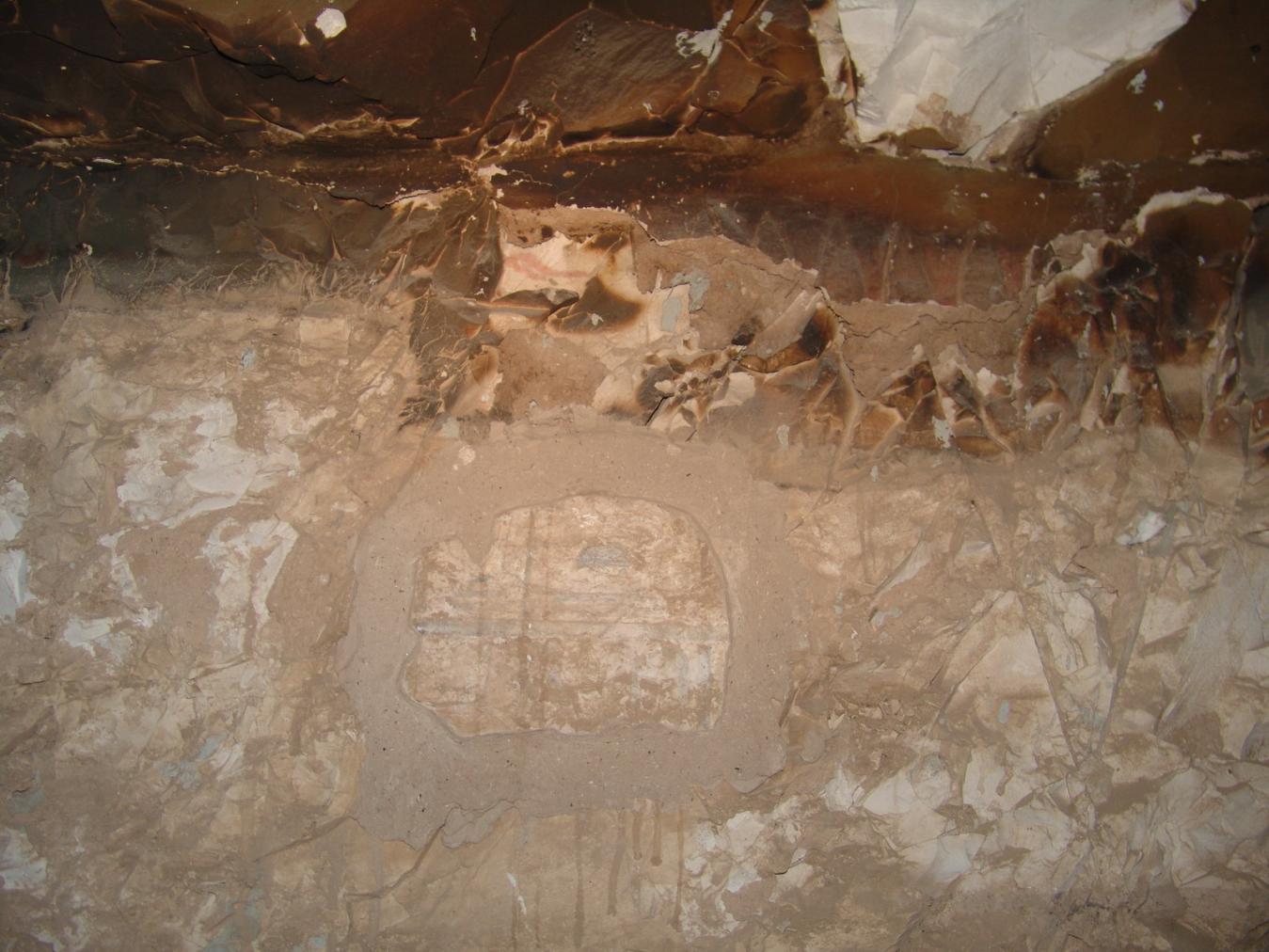
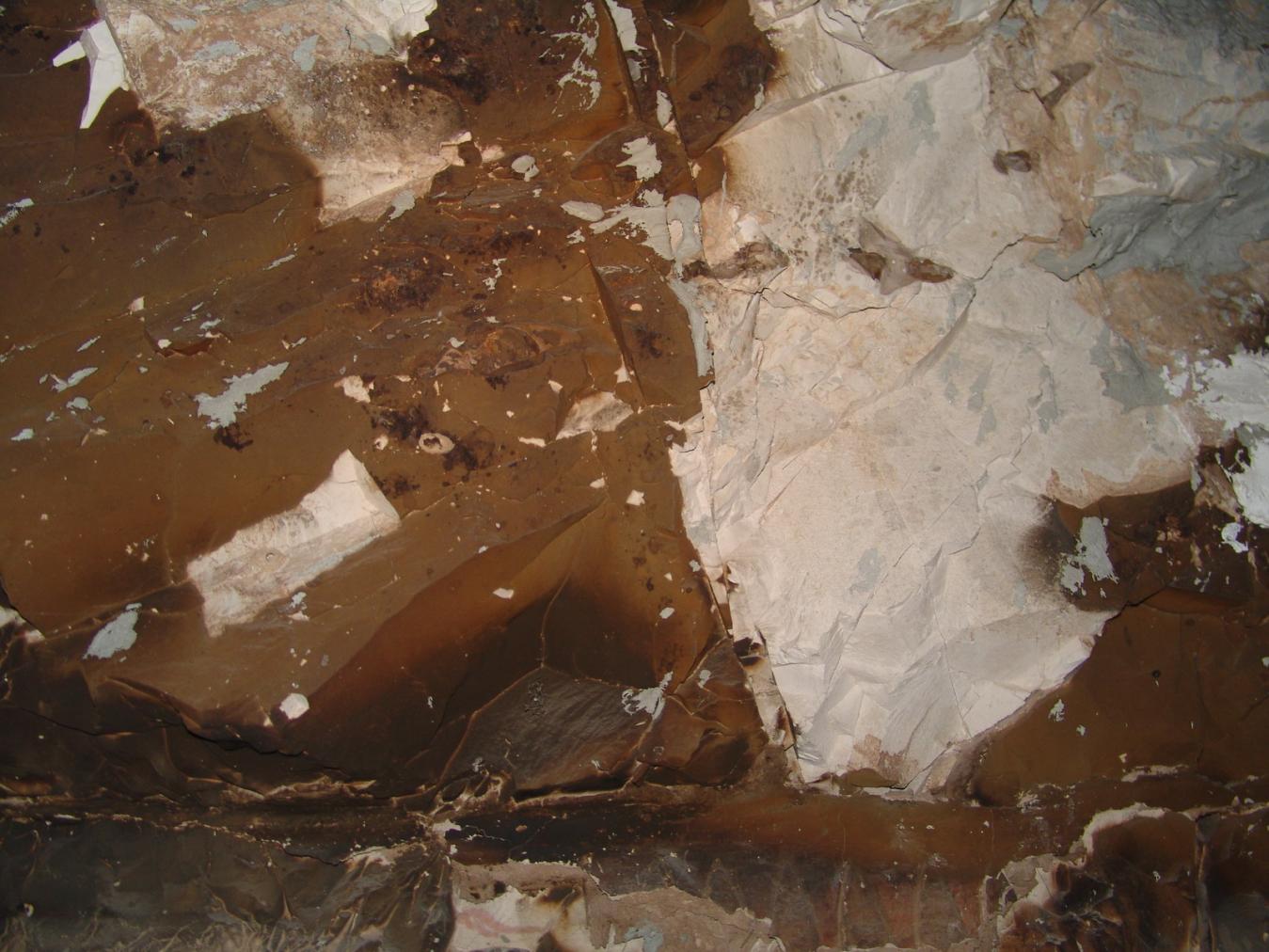
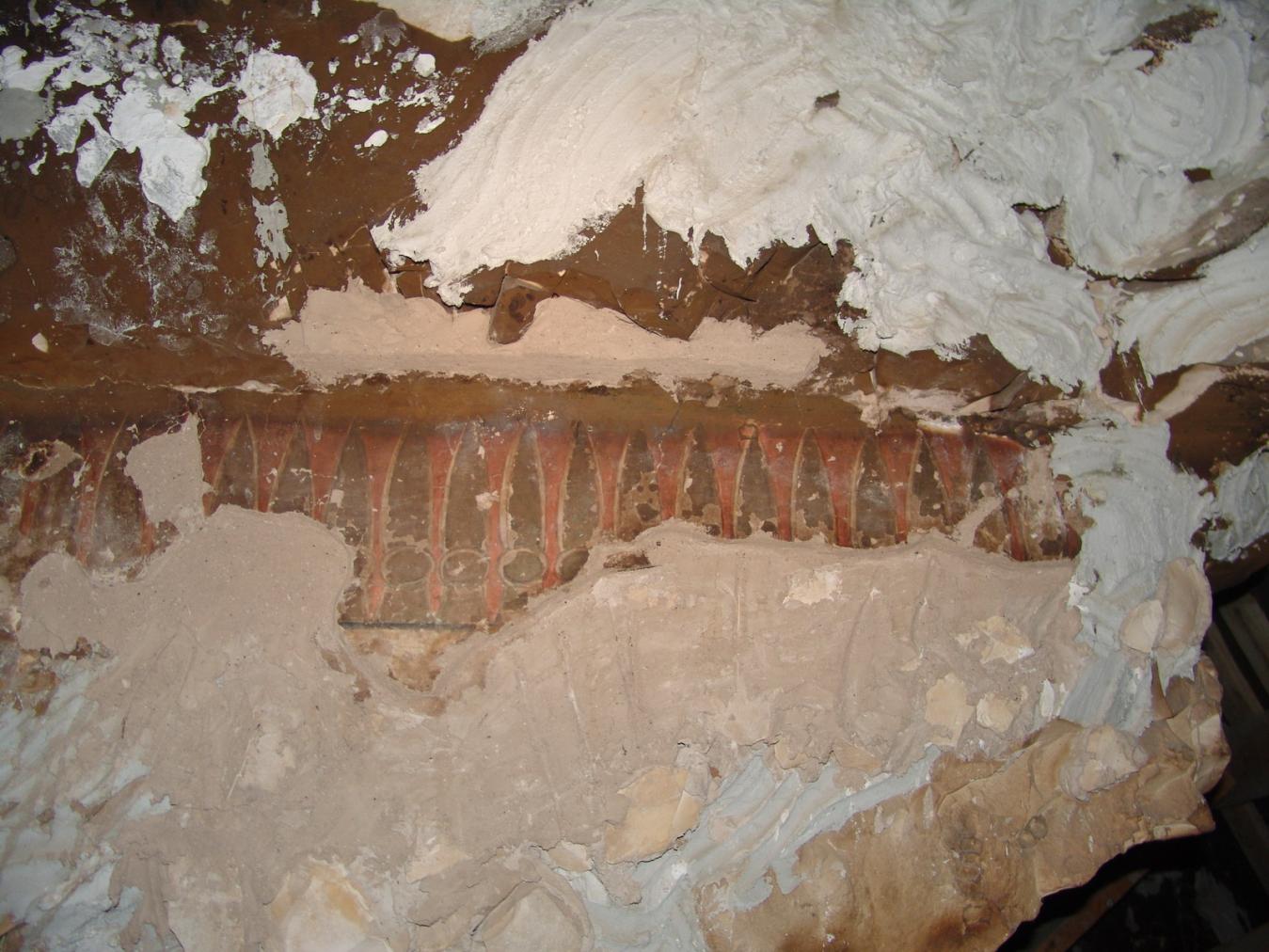
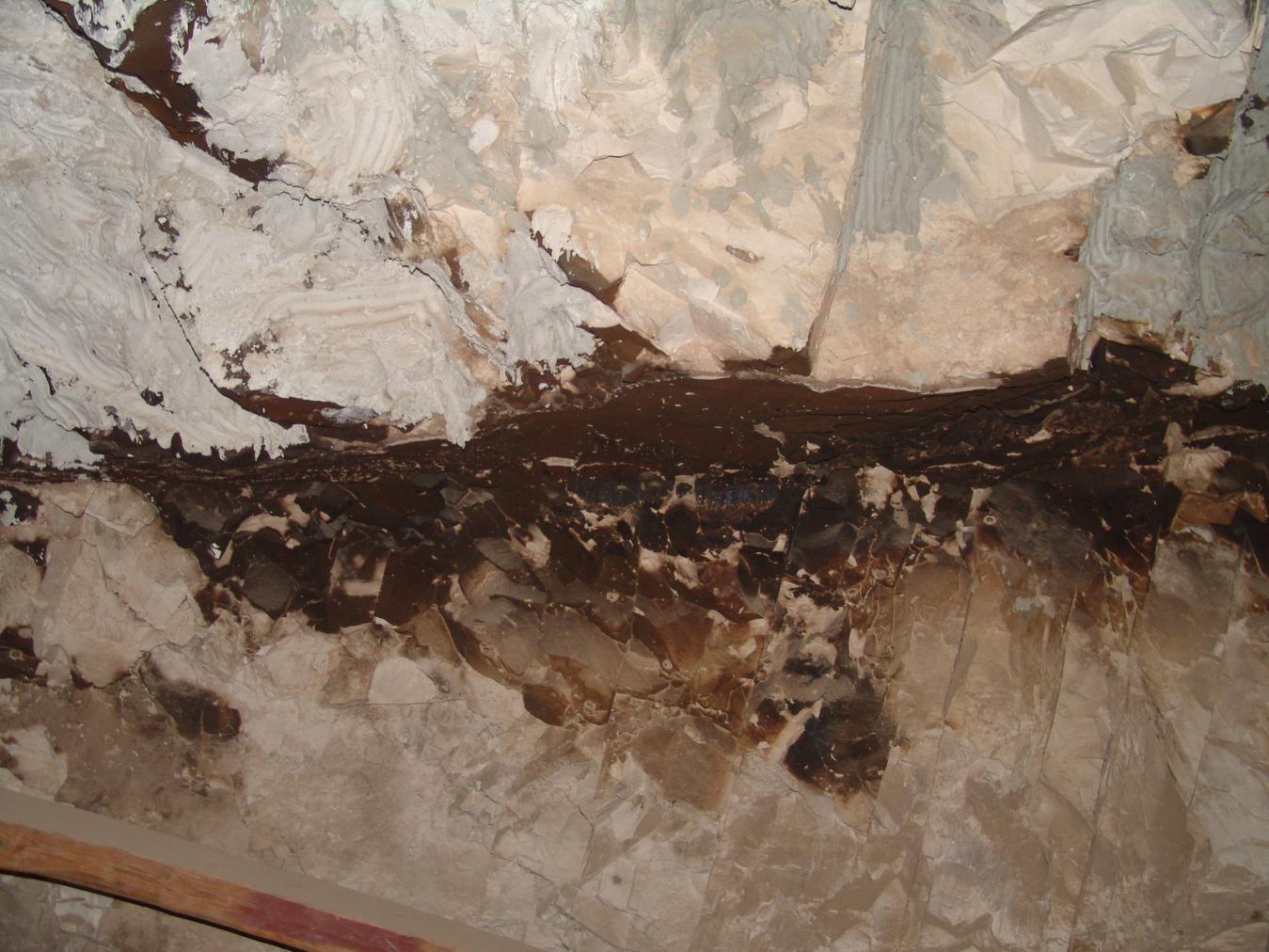
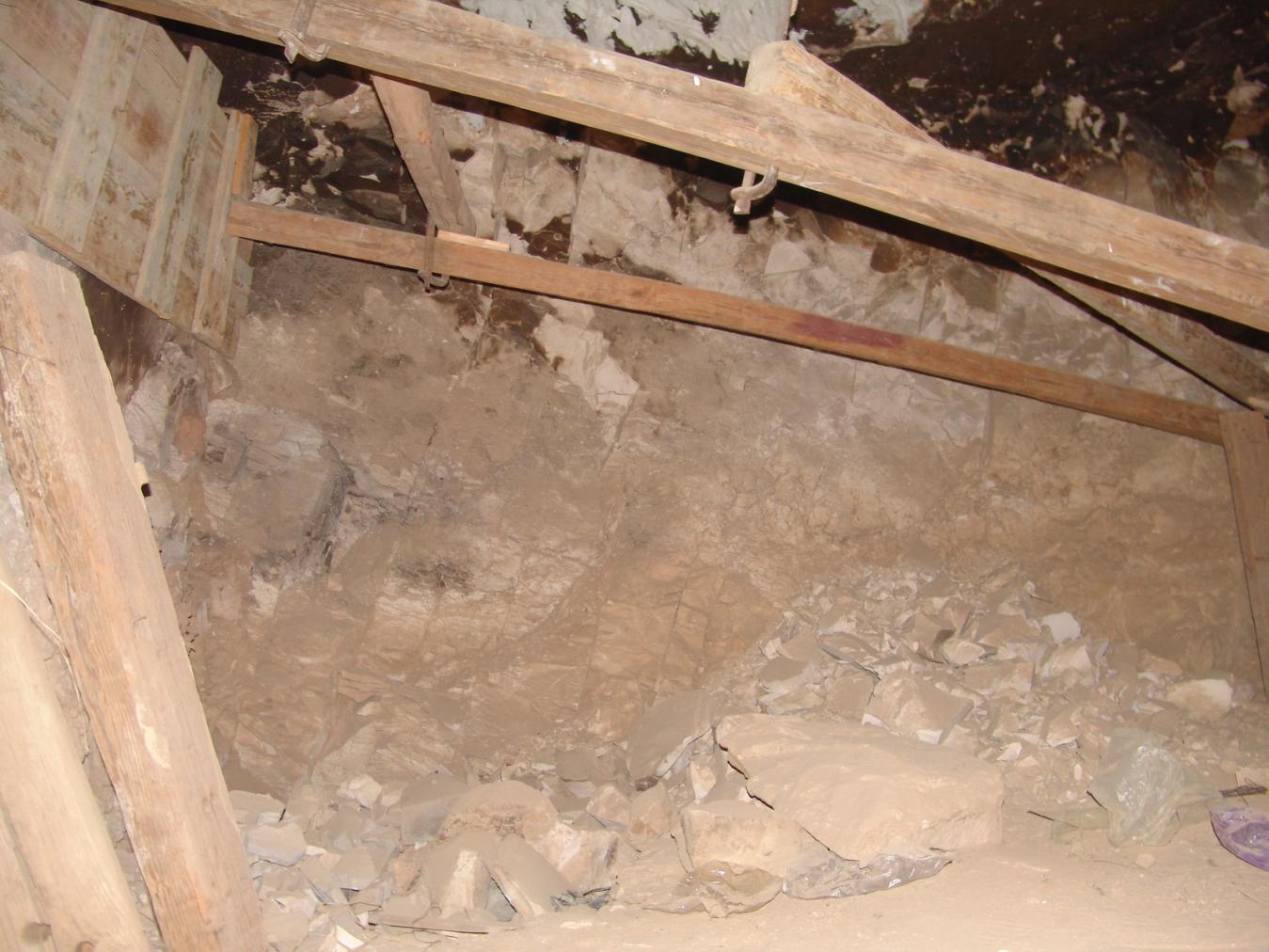
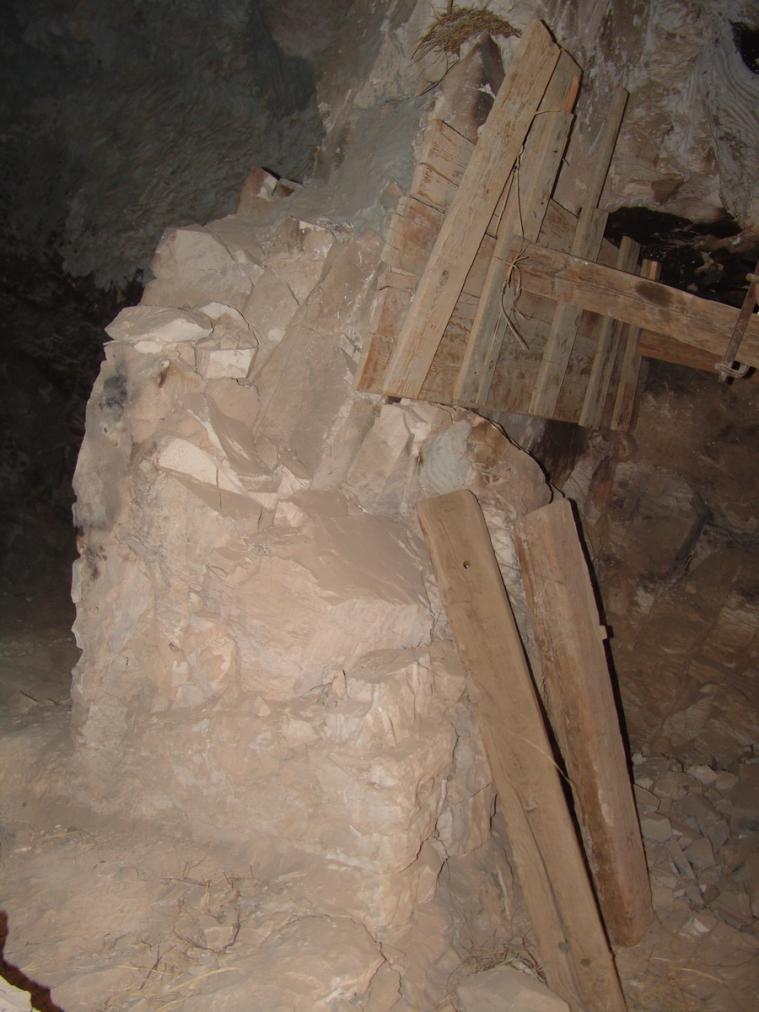
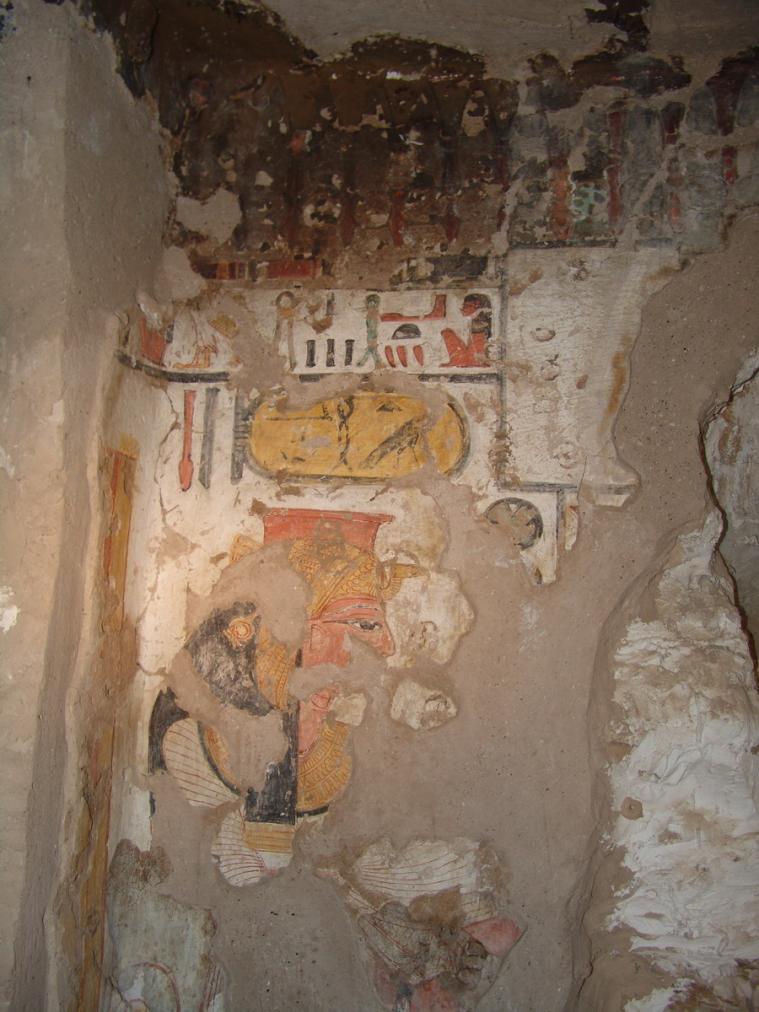
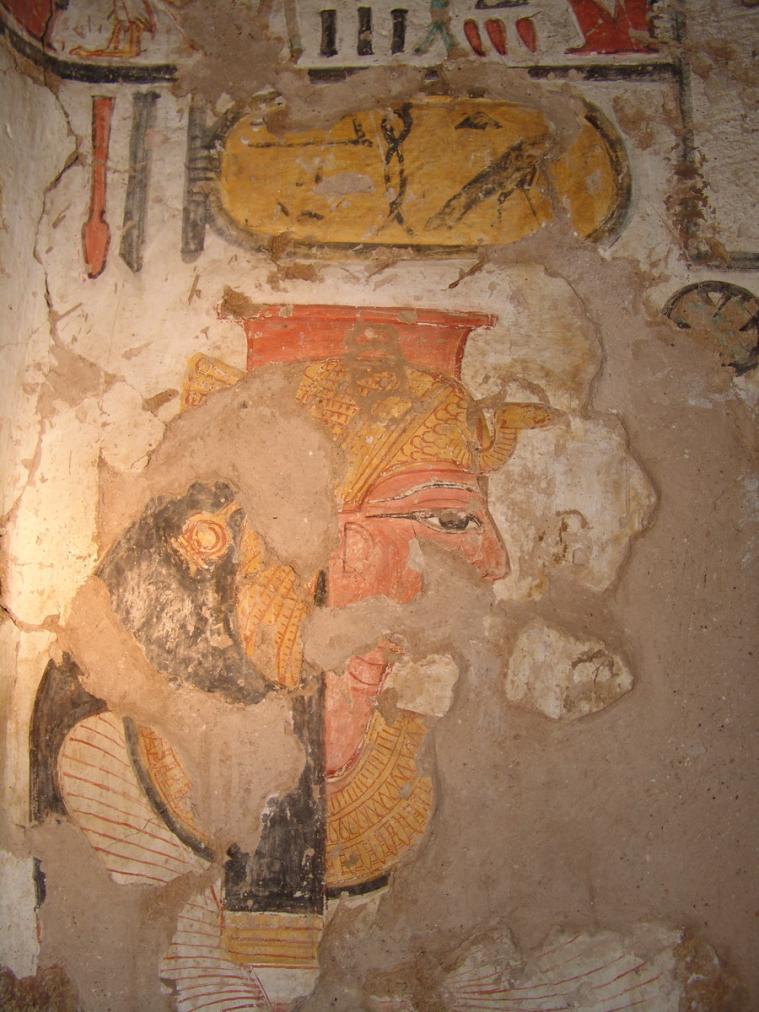
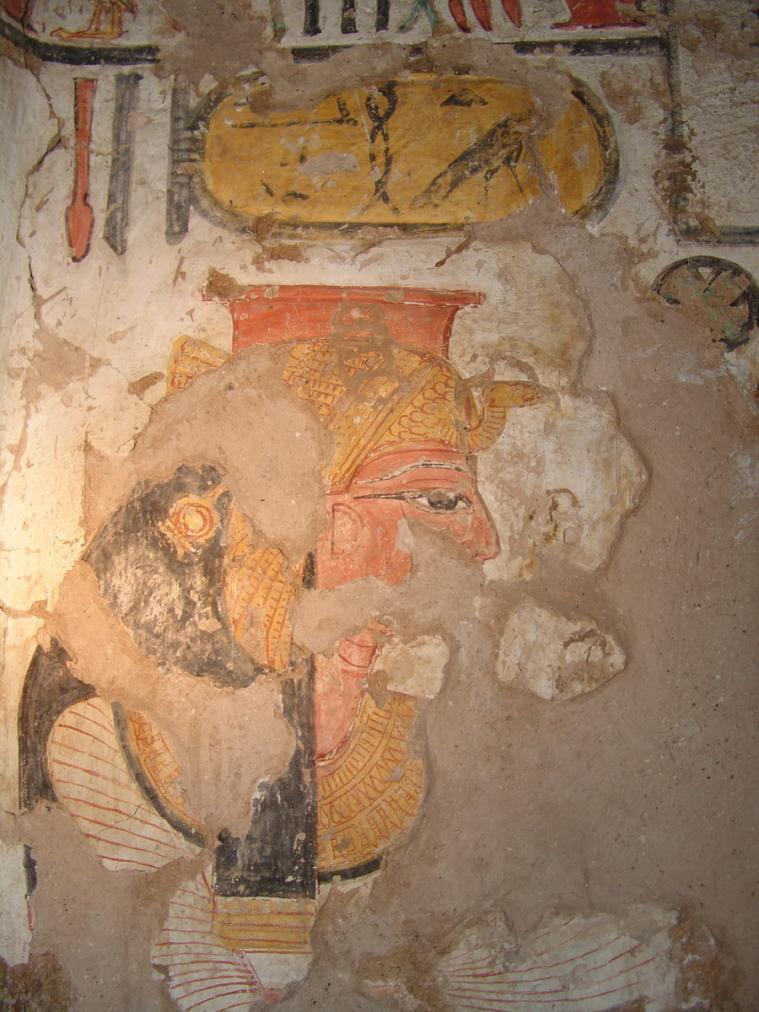

Side chamber Ba
See entire tombA niche cut into the eastern wall of Chamber C opens into a shaft and leads down to a rough, undecorated side chamber. This was added during a period of reuse and has been dated to the 2nd and 3rd centuries A.D. (Roman Period). Over 100 mummies were discovered in this chamber and one individual was linked to the corporation of gardeners and farmers for Amun.
Burial chamber C
See entire tombThis chamber lies on axis with the tomb's entryway and functioned as the final resting place for the Queen. It has no extant decoration and only the upper part of the eastern wall shows signs of plastering. The ceiling has collapsed, resulting in a high vaulted-shape. The rear and front walls have steeply dipping joints along which large rock fragments have broken off.
Chamber plan:
RectangularRelationship to main tomb axis:
ParallelChamber layout:
Flat floor, no pillarsFloor:
One levelCeiling:
Flat
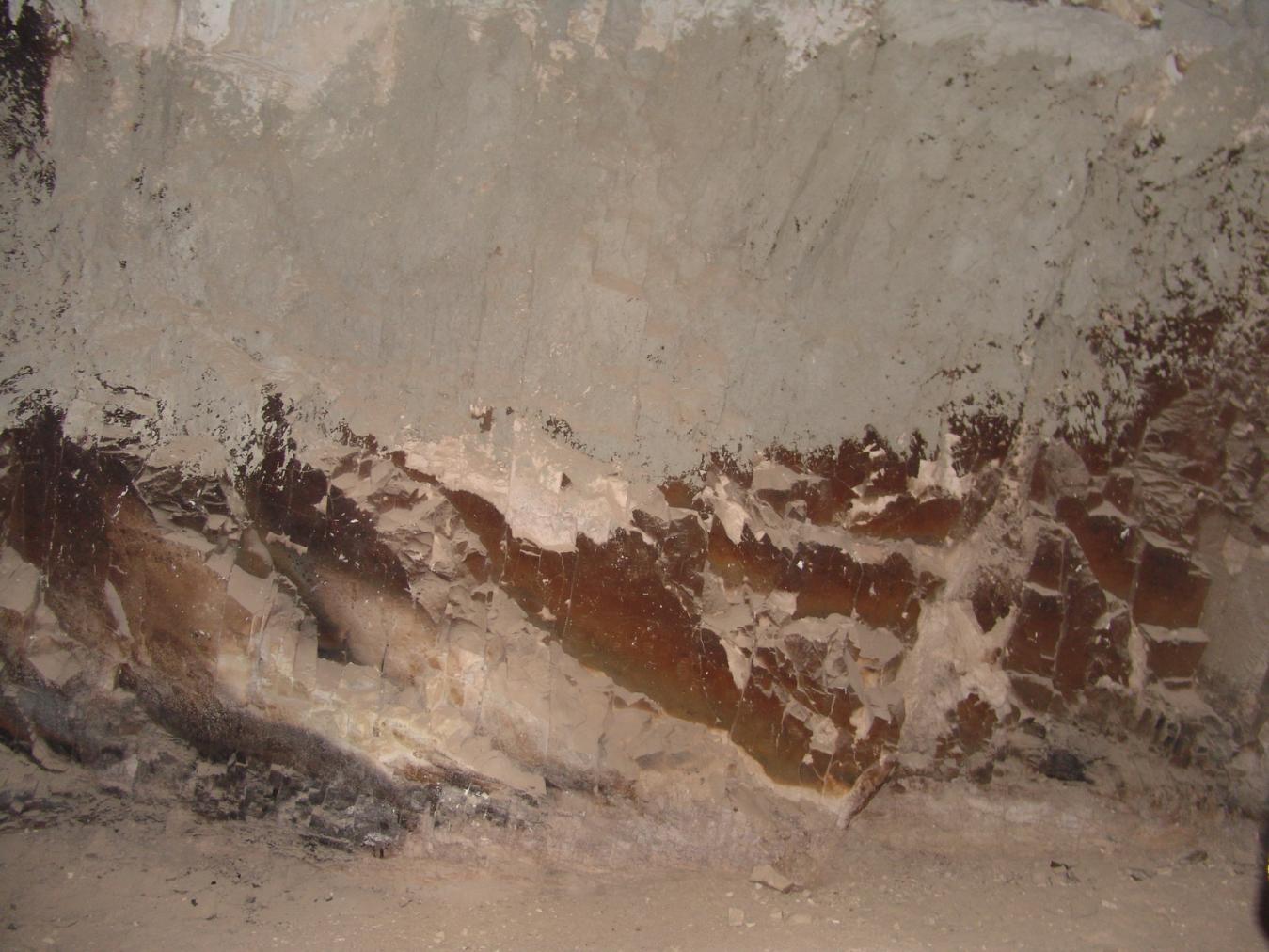
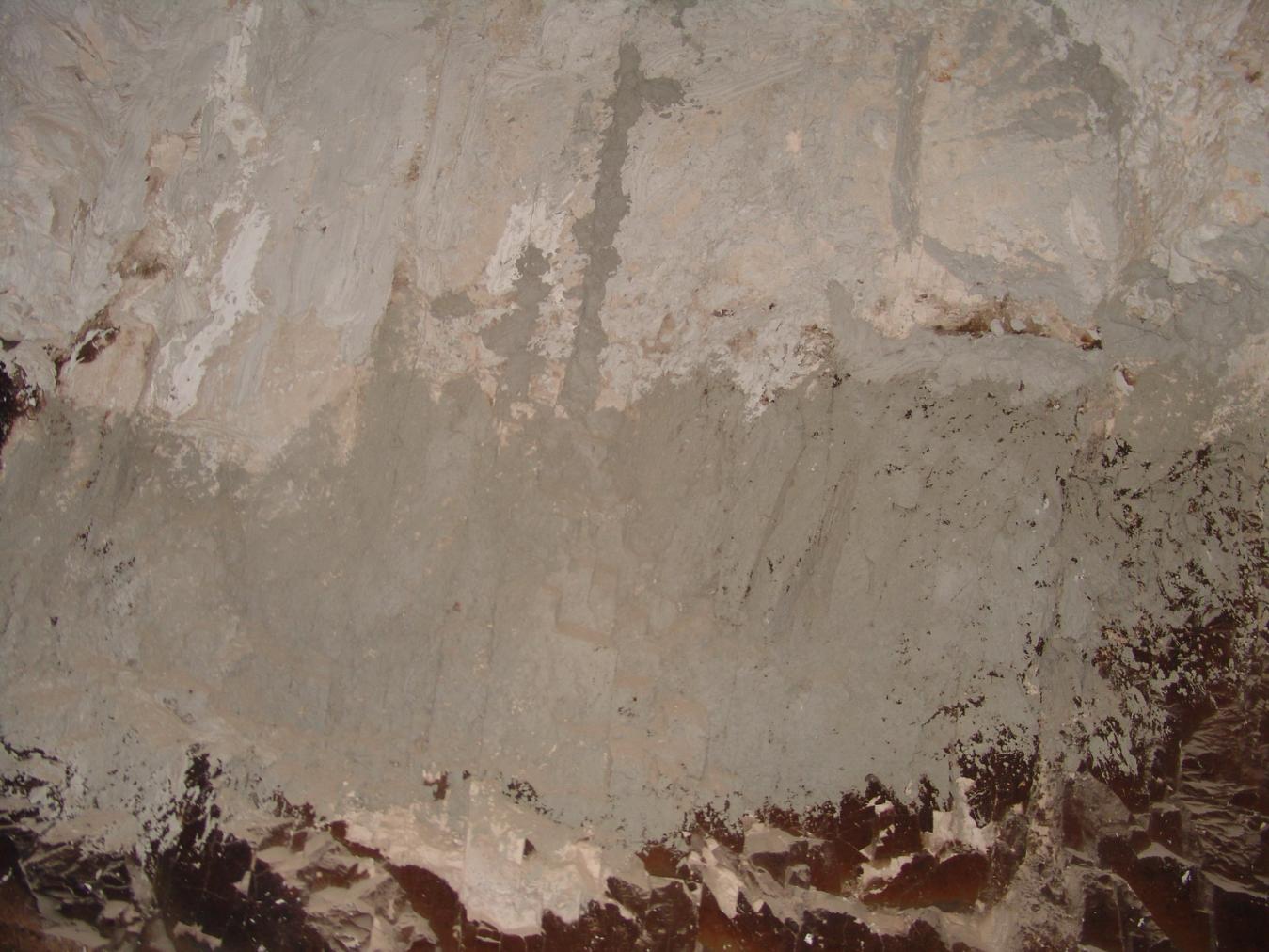
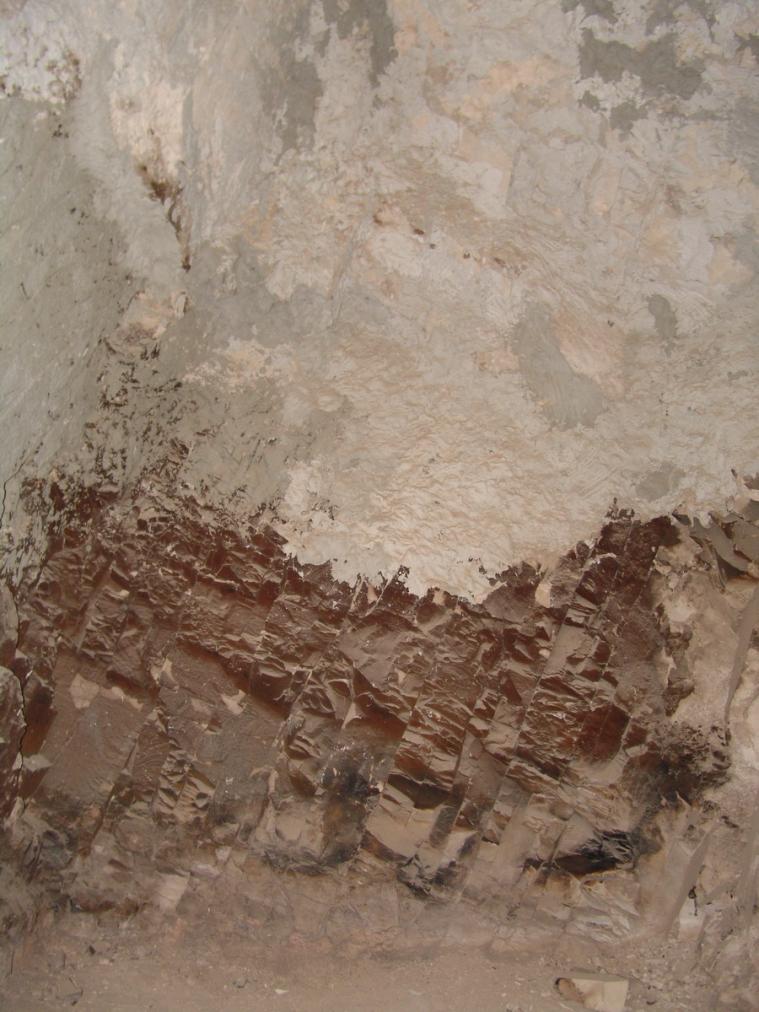
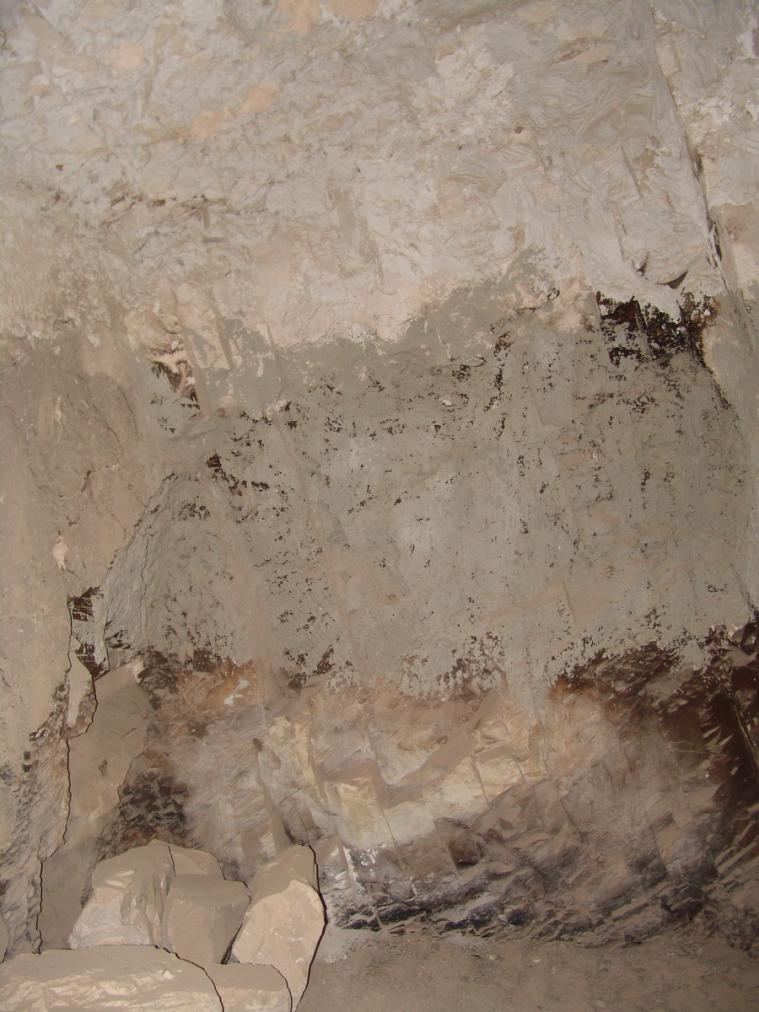
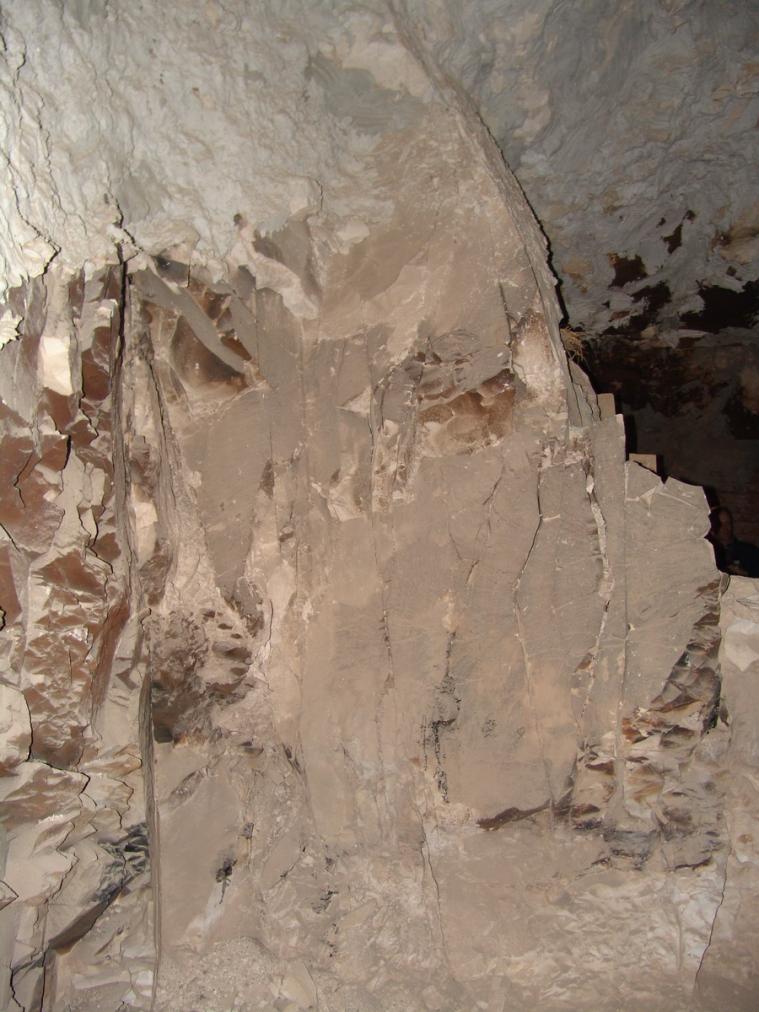
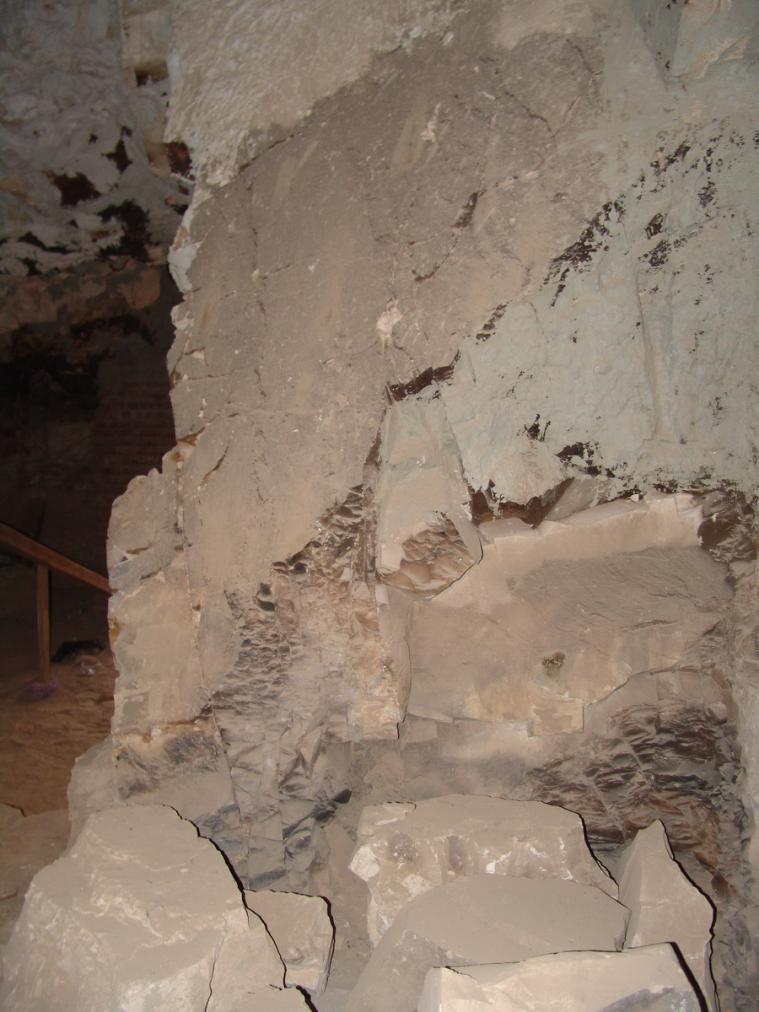

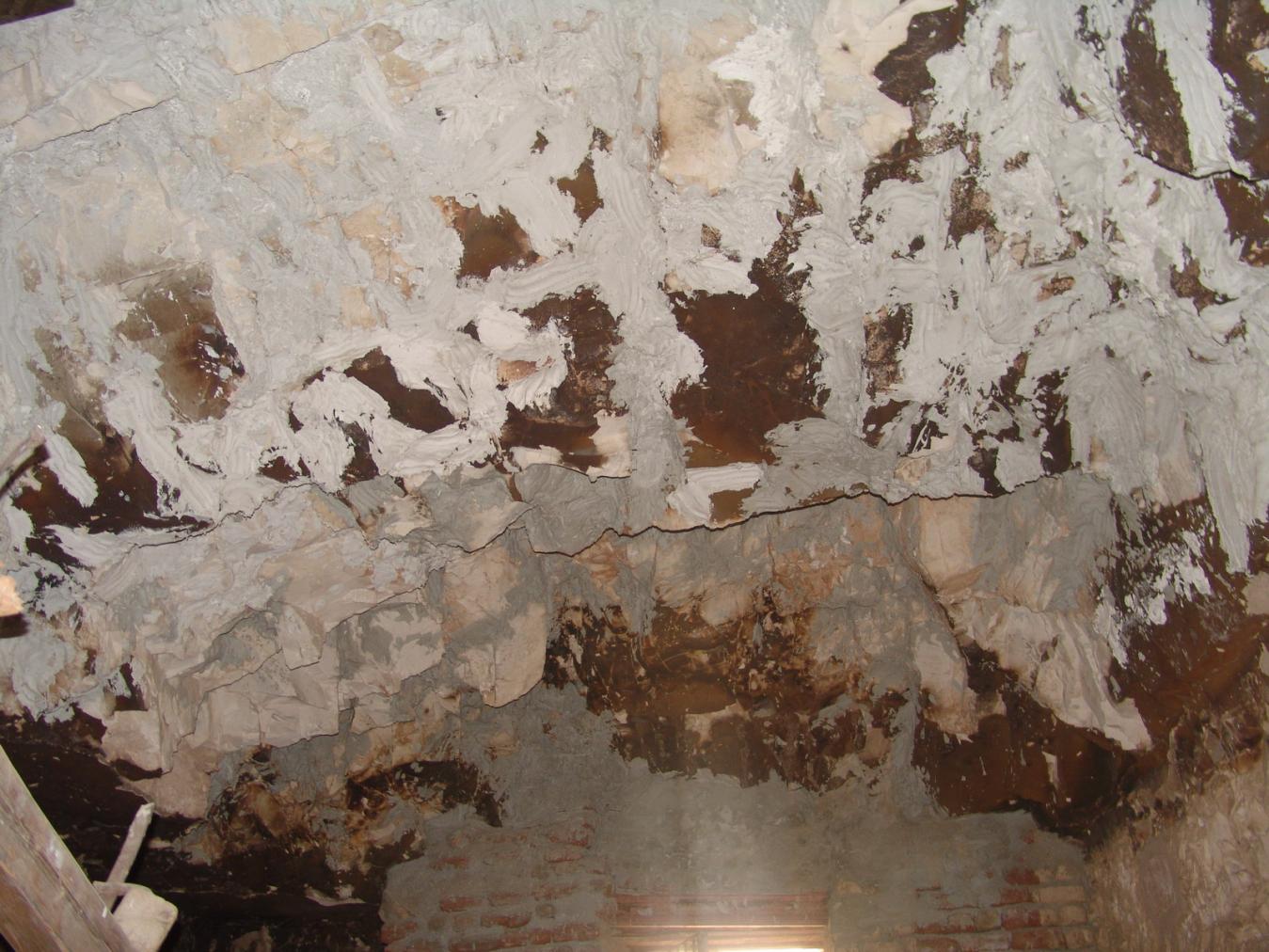
Gate C
See entire tombThis gate lies on axis with the tomb's entryway. It has suffered substantial rock loss and the door jambs are completely destroyed.
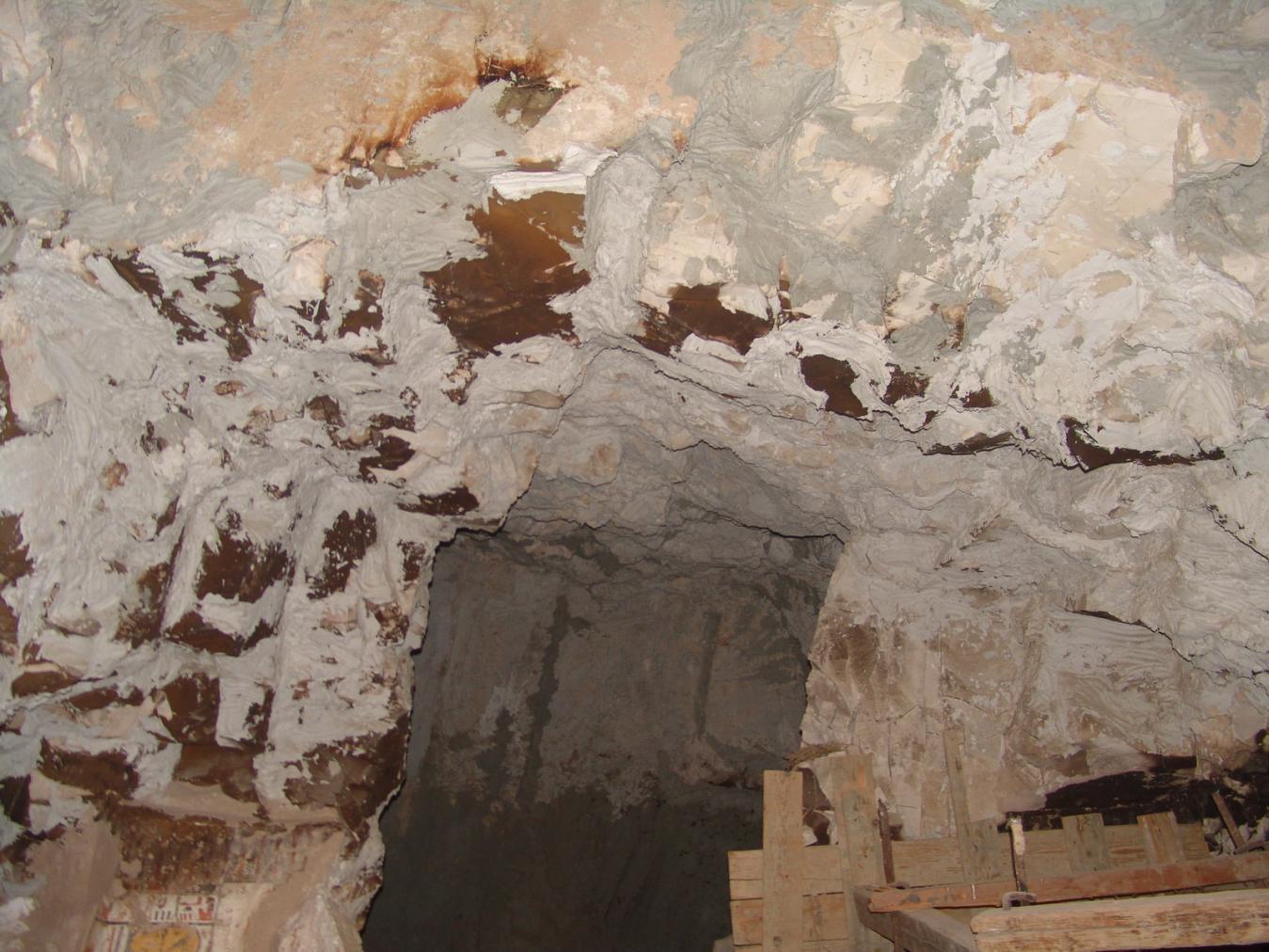

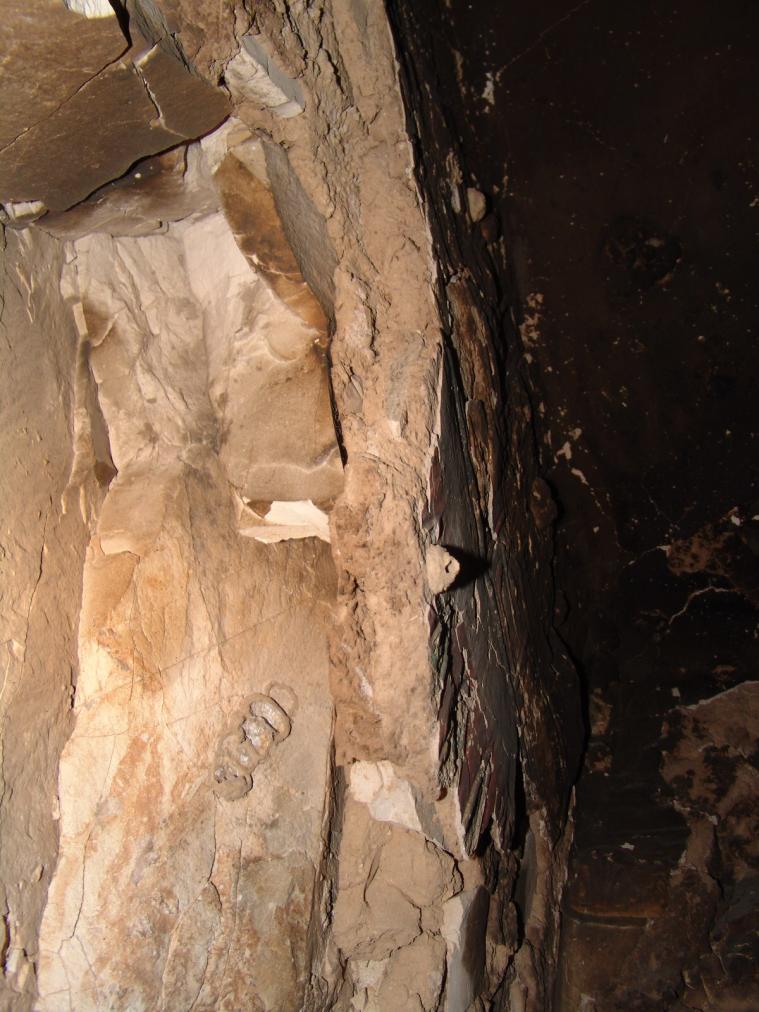

About
About
QV 33 is located on the upper portion of the slope on the south side of the main Wadi, adjacent to tombs QV 31 and QV 32. This tomb is entered through a stepped Ramp (A) and has two consecutive chambers on axis (B and C). To the east of Chamber B lies a shaft to a lower side chamber (Ba), which partly underlies Chamber Bb of QV 31. The tomb is in poor condition with little painted decoration remaining. Only very small and fragmentary areas of raised relief survive at the tops of the walls and the ceiling of chamber B. The plaster was thickly applied with rock shards mixed in to pack out the wall and create a flat surface. The paintings are blackened from fire and show evidence of other heat-related damages.
QV 33 belonged to Queen Tanedjemy (“the sweet one”). According to Christian Leblanc, she was the secondary wife of Seti I and a daughter of Ramses I. An alternative theory, posited by Lana Troy, is that she was the daughter-wife of Ramses II. The earlier attribution to Mutnedjemt, wife of Horemheb, based on an alternative reading of a poorly preserved Cartouche is no longer accepted. Fragmentary remains of Tanedjemy's image and cartouche survive on the west and south walls of chamber B.
The tomb was cleared by the Franco-Egyptian Mission in 1978-1980, but has been accessible since at least the time of John Gardner Wilkinson (1828). It was reused substantially in the 26th Dynasty by low ranking Theban temple officials and in the Roman period for mass burial. Finds recovered include glazed beadwork with winged scarabs and pearls, wooden Sarcophagus fragments painted with mythological scenes, as well as 108 Roman mummies. One Roman individual was linked to the corporation of gardeners and farmers for Amun, also mentioned on sarcophagi found by Schiaparelli in QV 43 and QV 44. QV 33 is currently not open to visitation and a modern fired brick doorway with metal door prevents access.
Noteworthy features:
QV 33 is attributed to Queen Tanedjemy and was reused substantially during the Late and Roman Periods.
Site History
The tomb was constructed in the 19th Dynasty and probably pillaged at the end of the 20th Dynasty. It was reused during the Saite period (26th Dynasty) by low ranking Theban temple officials and workers. A second period of Roman reuse as catacombs during the 2nd and 3rd centuries A.D. was revealed by the presence of 108 mummies. One of the latter was linked to the corporation of gardeners and farmers for Amun, also mentioned on sarcophagi found by Schiaparelli in QV 43 and QV 44. There also appears to be evidence of ancient stabilization efforts in the tomb, although the period in which this occurred is unknown.
Dating
This site was used during the following period(s):
Exploration
Conservation
Conservation History
Christian Leblanc indicated evidence of ancient efforts to stabilize parts of the tomb, though the nature of these is unclear. According to the GCI-SCA, recent conservation efforts include wooden shoring and extensive application of gypsum/cement plaster to rock surfaces in order to prevent further loss. One long horizontal wooden brace runs north-south on the west side of chamber (B), supporting the remains of the south wall, which is also the shared front wall of the burial chamber (C). Another shorter horizontal brace lies inside the entrance to the lower chamber (Ba), which supports its south wall. Gypsum/cement plaster has been applied to the rock throughout the tomb, especially on the ceiling of the rear chamber (C). Two phases of modern treatment are apparent, as evidenced by two different colored plaster materials, grey and white.
Treatment of the wall paintings is evident in only one area, focusing on the portrait of the queen on the south wall, east side of chamber (B). The treatment included plastering around surviving areas of painting. Cleaning of the blackening in this area may also have been attempted on the upper border decoration at this time and drip marks on the surface indicate some sort of consolidation work.
Site Condition
According to the GCI-SCA, the excavation of the tomb into an area of geological faulting is the principal factor in the inherent poor quality of the rock and its heavy fracturing along bedding and joint planes and subsequent extensive loss both inside the tomb and above the entrance. Rare rain events are likely to be a contributing factor to the fracturing of the rock, especially above the entrance where the rock is most exposed. The rock into which the tomb is cut is highly fractured and exhibits ongoing loss. Recent losses are along the sides of the entrance Ramp (A) and above Gate B. This area of rock remains at risk of further collapse. Localized areas of recent loss are also present in chamber (B), along the west wall, and especially in the center of the ceiling where post-fire loss is apparent. Substantial rock loss has occurred in Gate C and in the ceiling of chamber (C), resulting in a high, vault-shaped ceiling. Some of this loss occurred after blackening of rock surfaces from fire. The rear and front walls of chamber (C) have steeply dipping joints along which rock fragments have broken off, resulting in fragile remains of the front wall. There are many losses that have occurred in the wall paintings, including both pre-fire and post-fire losses. Surviving areas of painted plaster are fragile and vulnerable, often occurring in areas of rock instability or where substantial plaster infill material has been lost. Paintings are blackened from fire, covered with a thick, brown matte deposit, mainly on the upper parts of walls; lower areas of the walls are not blackened and may have been protected by debris or have since suffered substantial losses in these areas. The paintings may have also suffered heat-related damage, which has left the plaster cracked and friable.
Hieroglyphs
Queen Tanedjemy
 The King's Daughter, Royal Wife, Mistress of the South and North, Tanedjemy
sAt-nswt Hmt-nswt Hnwt-Smaw-mHw tA-nDmy
The King's Daughter, Royal Wife, Mistress of the South and North, Tanedjemy
sAt-nswt Hmt-nswt Hnwt-Smaw-mHw tA-nDmy


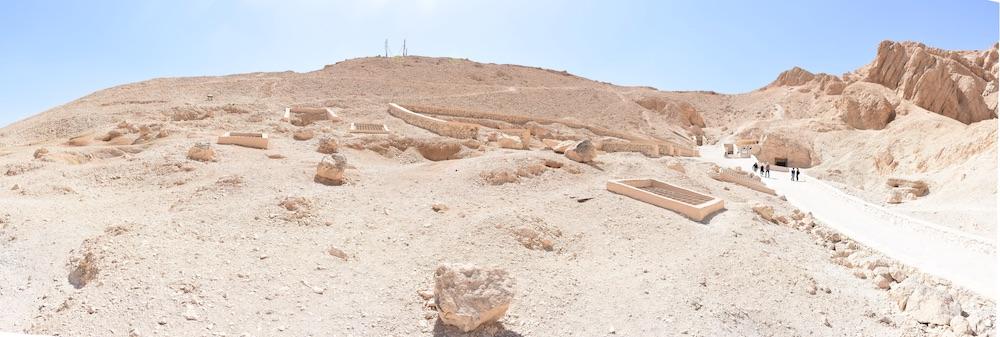



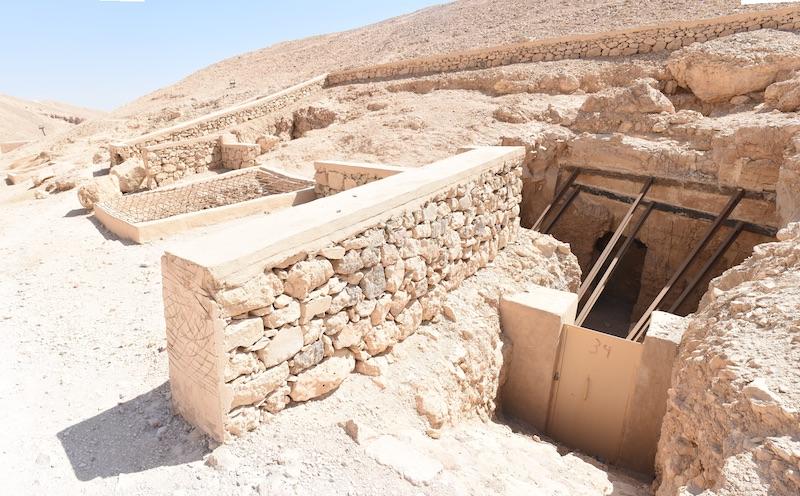




































Bibliography
Leblanc, Christian. Nefertari, l'aimée-de-Mout: épouses, filles et fils de Ramsès II. Monaco: Éditions de Rocher, 1999.
Leblanc, Christian and Fathy Hassanein. La Vallée des Reines. Archéologia 205 (1985): 24-31.
Lecuyot, Guy. Une nécropole de Thèbes-Ouest à l'époque romaine et copte: la Vallée des Reines. Kyphi, 2 (1999): 33-61.
Lepsius, Richard. Denkmäler aus Aegypten und Aethiopien: Texten. Vol. 3. Leipzig: J.C. Hinrich, 1897-1913.
Macke, André, and Christiane Macke-Ribet. Les recherches anthropologiques (dans la Vallée des Reines). Les dossiers d'archéologie 149/150 (1990): 34-39.
Porter, Bertha and Rosalind L.B. Moss. Topographical Bibliography of Ancient Egyptian Hieroglyphic Texts, Reliefs, and Paintings, I: The Theban Necropolis, Part 2: Royal Tombs and Smaller Cemeteries. Oxford: Oxford University Press, 1964.
Thomas, Elizabeth. Was Queen Mutnedjemet the Owner of Tomb 33 in the Valley of the Queens? The Journal of Egyptian Archaeology, 53 (1967): 161-163.
Thomas, Elizabeth. The Royal Necropoleis of Thebes. Princeton: privately printed, 1966.
Troy, Lana. Patterns of Queenship in Ancient Egyptian Myth and History. Boreas, Uppsala Studies in Ancient Civilization and Near Eastern Civilizations, Acta Universitatis Upsaliensis, 14. Cambridge: Cambridge University Press,1986.

